Advertisements
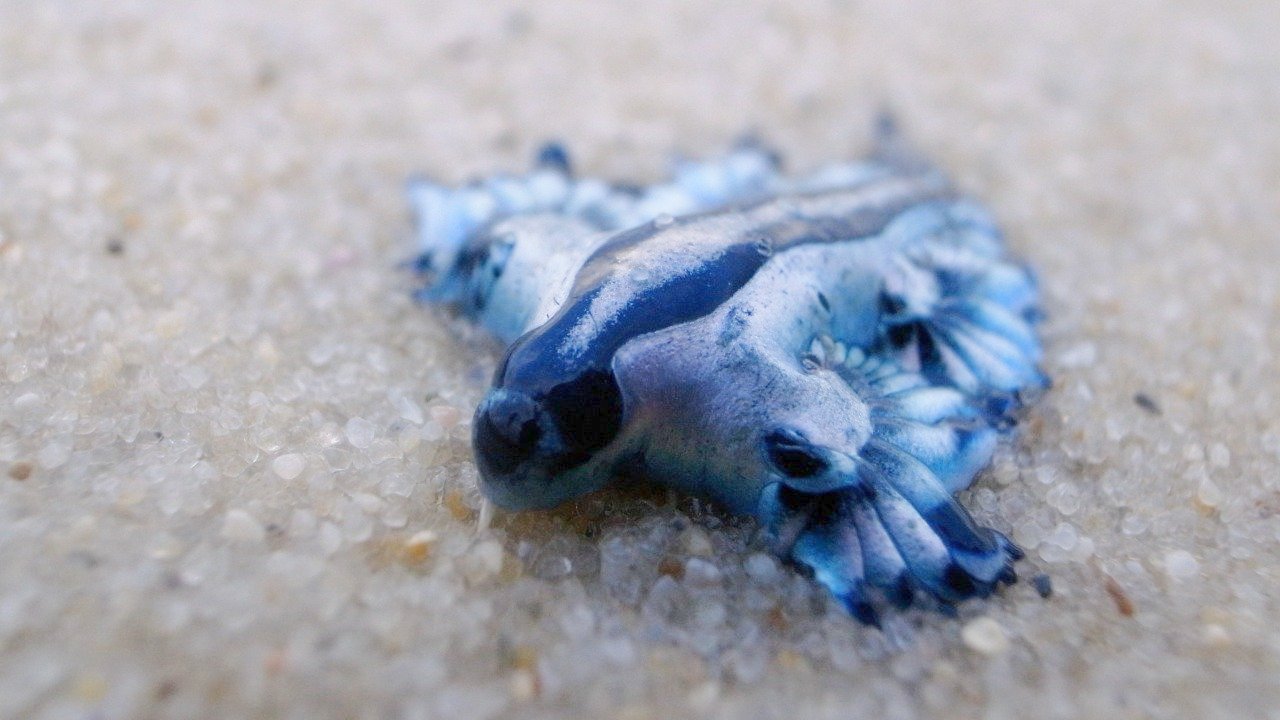
When Hunter Lane spies a flash of bright color in the sand, his solitary beach exploration suddenly gets far more exciting. For while the electric blue creature he’s spotted appears to be a kind of jellyfish, it’s unlike anything Hunter has ever seen before. He wonders, have I discovered a new species? And then the curious young man scoops up the mysterious animal to show his parents... Yet, as Hunter is soon about to discover, that is the very last action the boy should have taken.
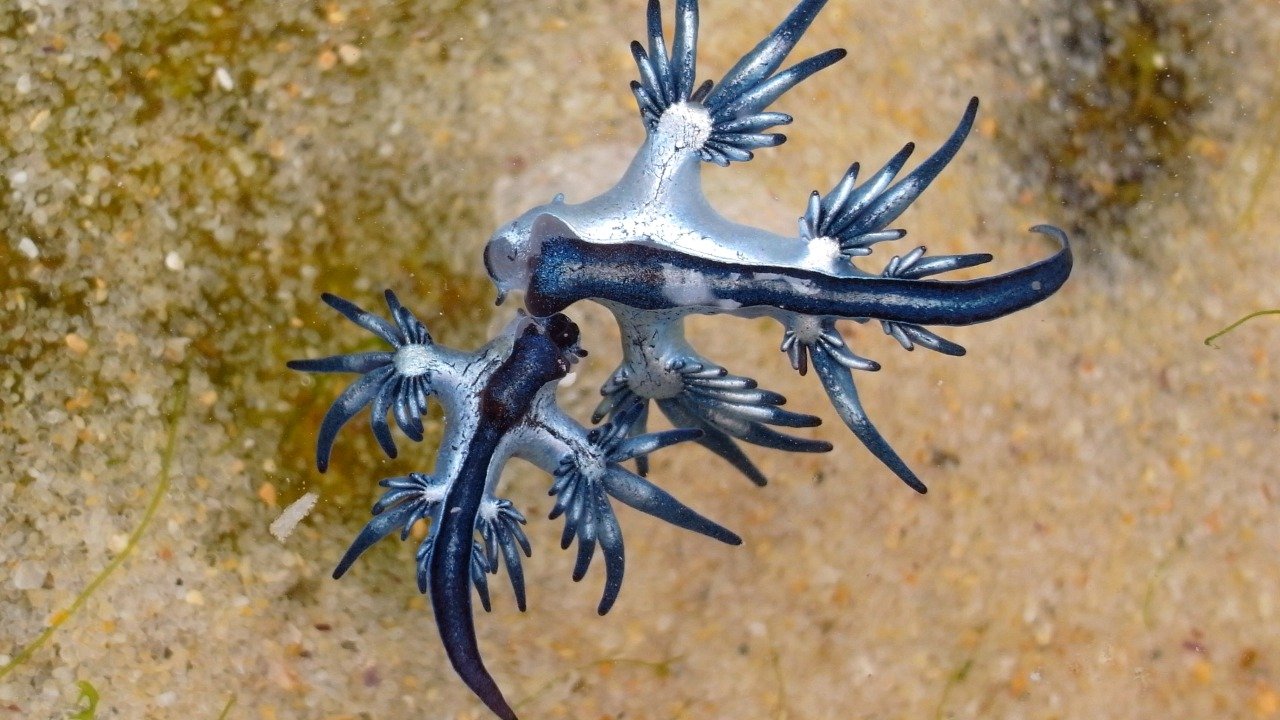
Given the creature’s striking color and strange shape, though, it’s not hard to see why it drew Hunter’s attention. The animal’s stunning blue hue cuts a stark contrast against golden sandy beaches, after all. And the outlandish creatures must have astonished quite a few unsuspecting Texans when they began washing up on the state’s shores.
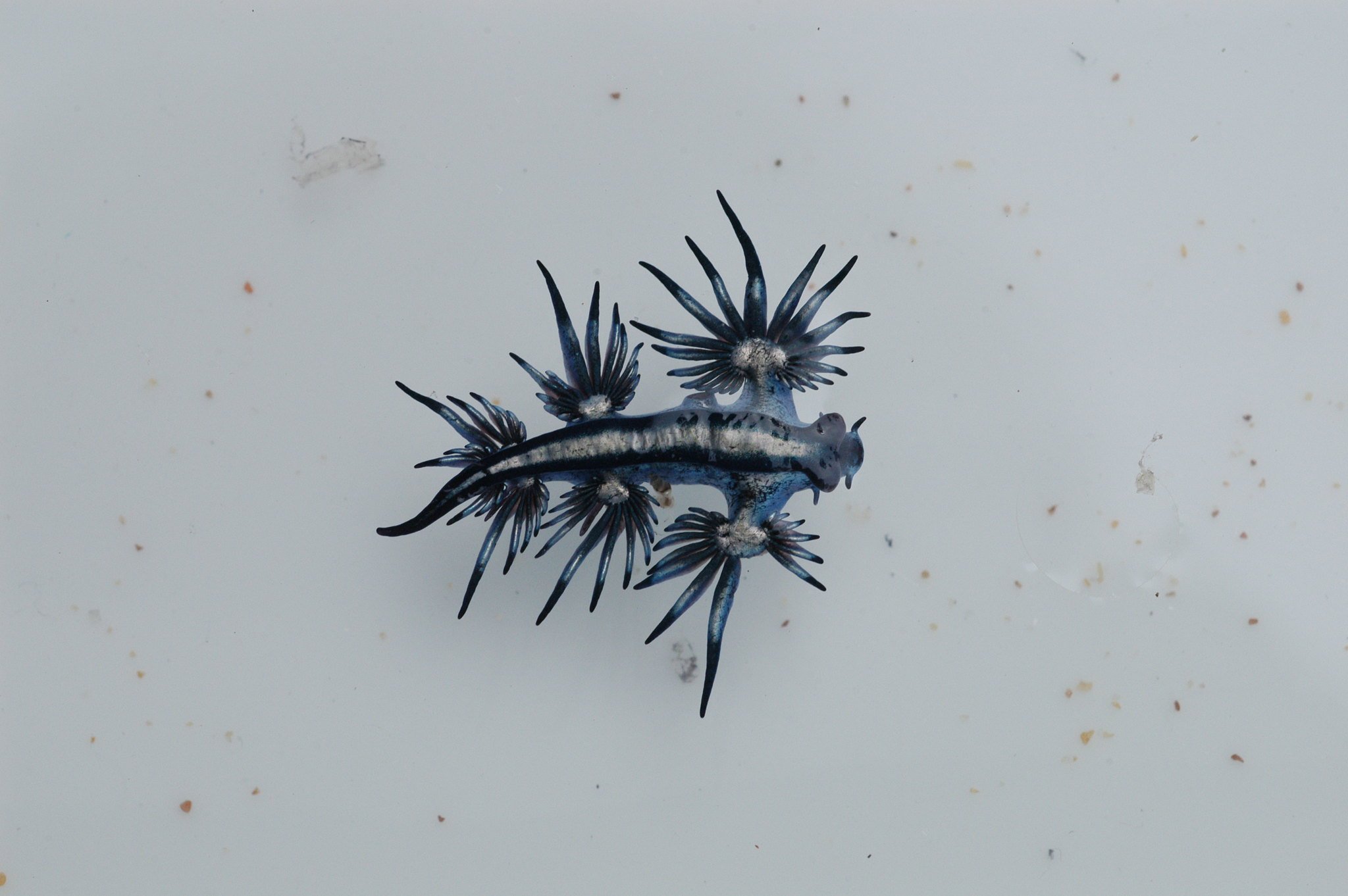
But it’s not just the alluring shade of one of these mystery lifeforms that interests beach-goers. Its shape also makes it look like something akin to a dragon – and naturally arouses the curiosity of passers-by. Bizarre wing-like projections that end in darker tips protrude from the side of its body in several different places, too.
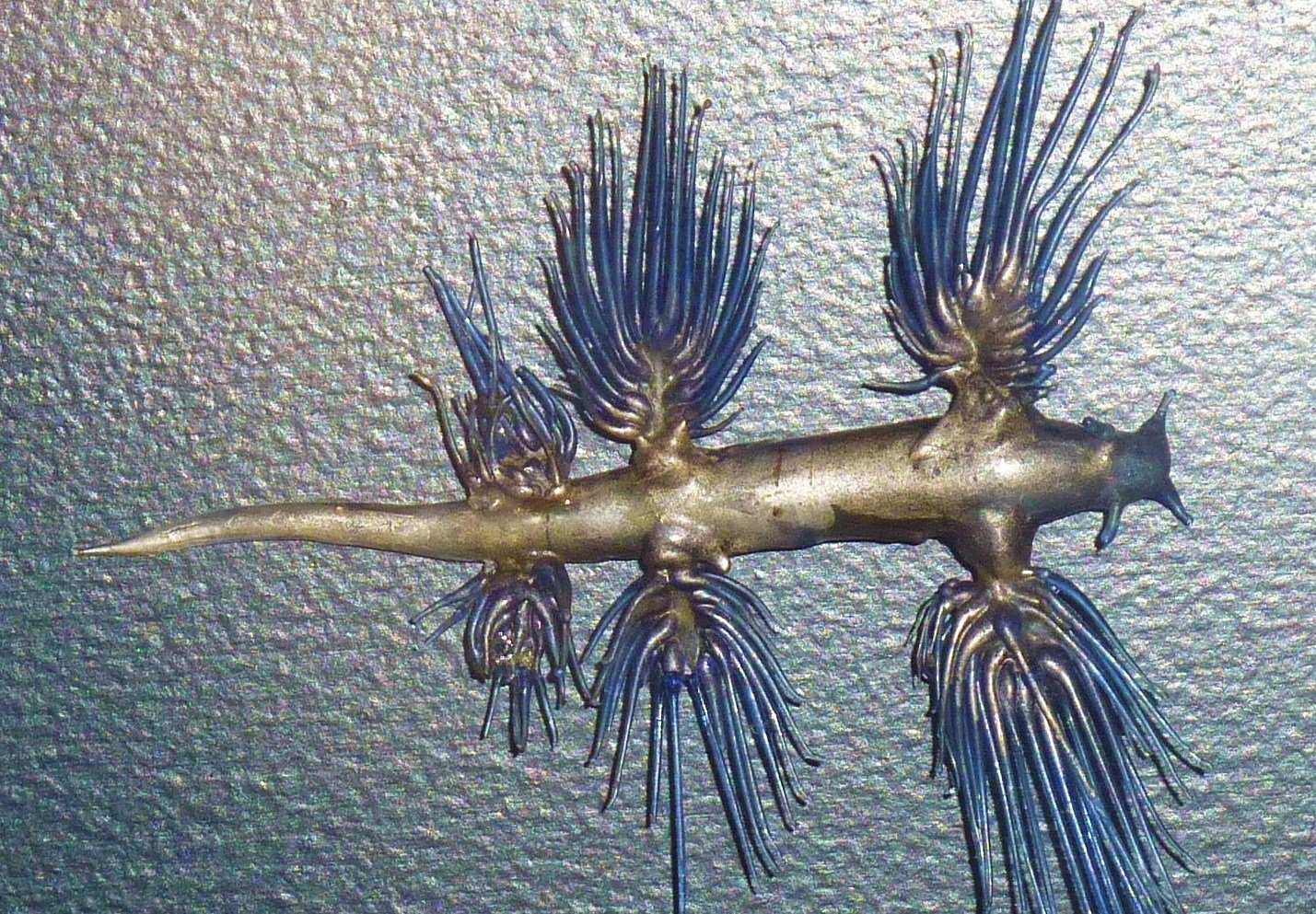
So, just like Hunter had, many people may initially think that these things are a species previously unknown to science. And while experts are aware of these creatures, the animals are exceptionally rare – and can be incredibly dangerous. That’s why visitors must heed the advice of wildlife professionals regarding Texas’ beach invaders.
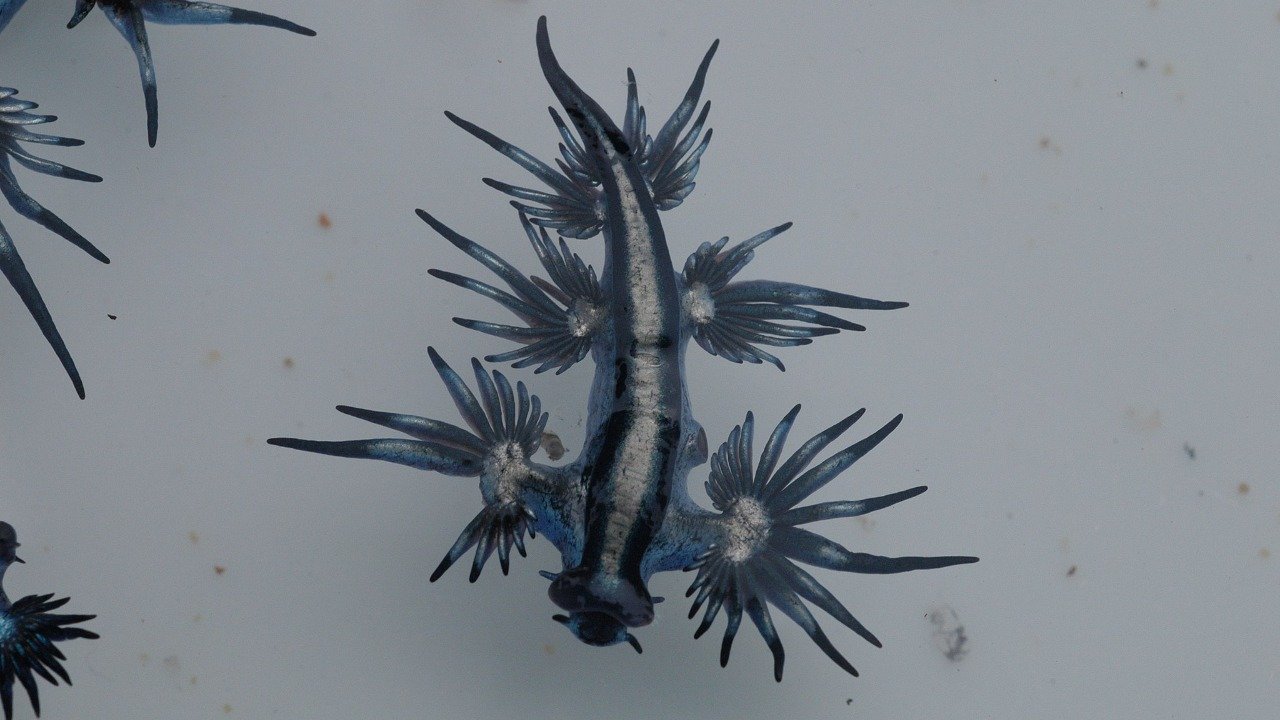
In fact, the Padre Island National Seashore (PINS) has even issued a warning about the creatures. And according to the organization, if you do see any electric blue wildlife on beaches, you shouldn’t approach them under any circumstances. So stay away and don’t touch them – because these spectacular visitors pose more of a threat than you might think.
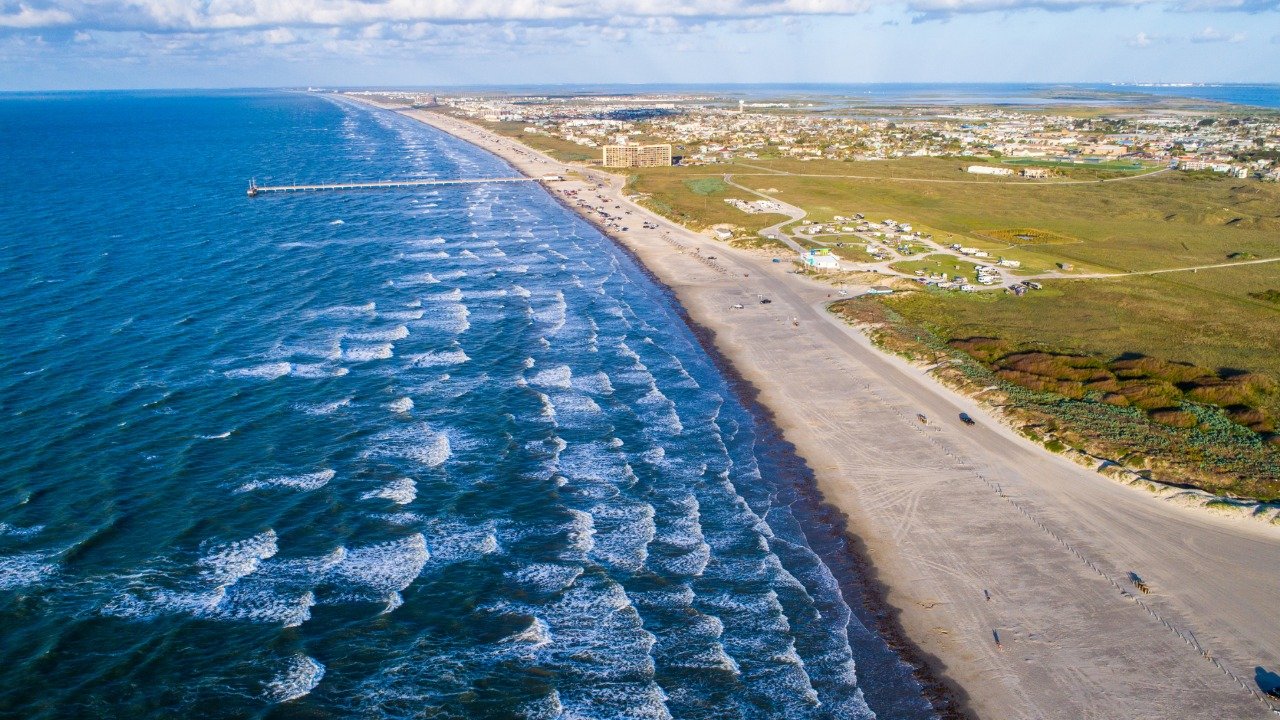
Unfortunately, though, Hunter didn’t get that message – and had no idea what he’d found along the shore that day. The seven-year-old boy made his amazing discovery on one of the beaches that form part of Padre Island National Seashore. He was visiting the locale with his parents, Trey and Leah Lane, in May 2020 when he spotted the creatures.
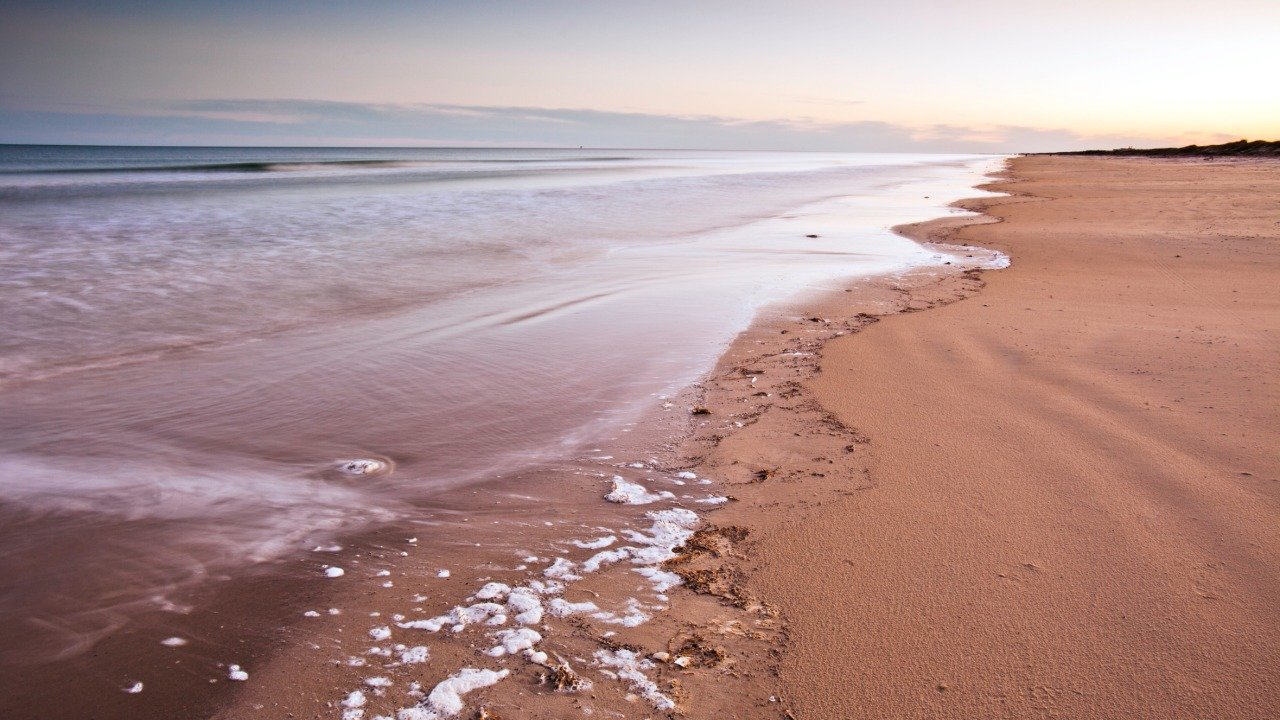
Padre Island officials report that Hunter was one of the first people on the beach to find the rare animals, too. But what was the child combing the beach for in the first place? Well, Trey told CNN it was his son’s passion for aquatic animals that led him to the discovery.
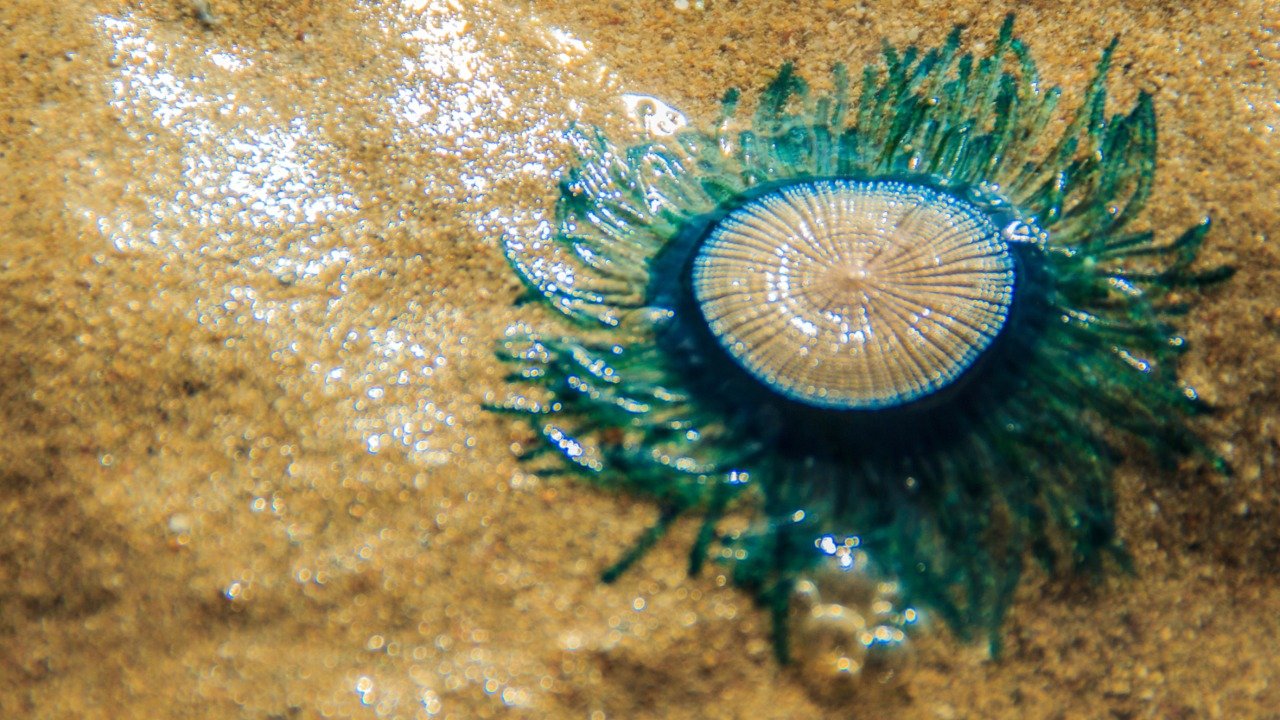
“Hunter loves sea creatures and thought he had found a blue button jellyfish,” Trey later informed the TV news network. It was an easy mistake to make, too. Blue button jellyfish not only share a similar color – hence their name – but also grow to roughly the same size as the mysterious creature that Hunter found.
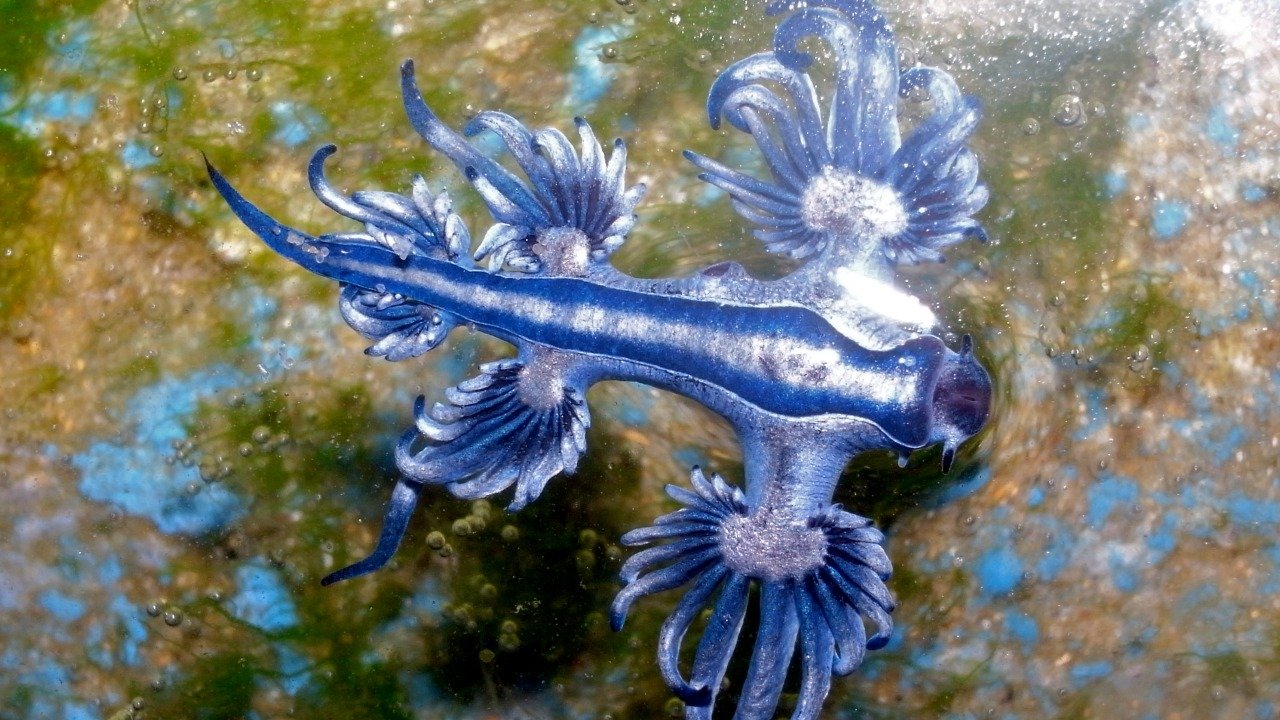
That’s why Hunter picked up the creature – thankfully using one of his toys – and took it to show his father. On the trip back, though, the inquisitive boy must have realized that he’d stumbled upon something else entirely. “He proclaimed to me that he had discovered a new species,” Trey recalled.
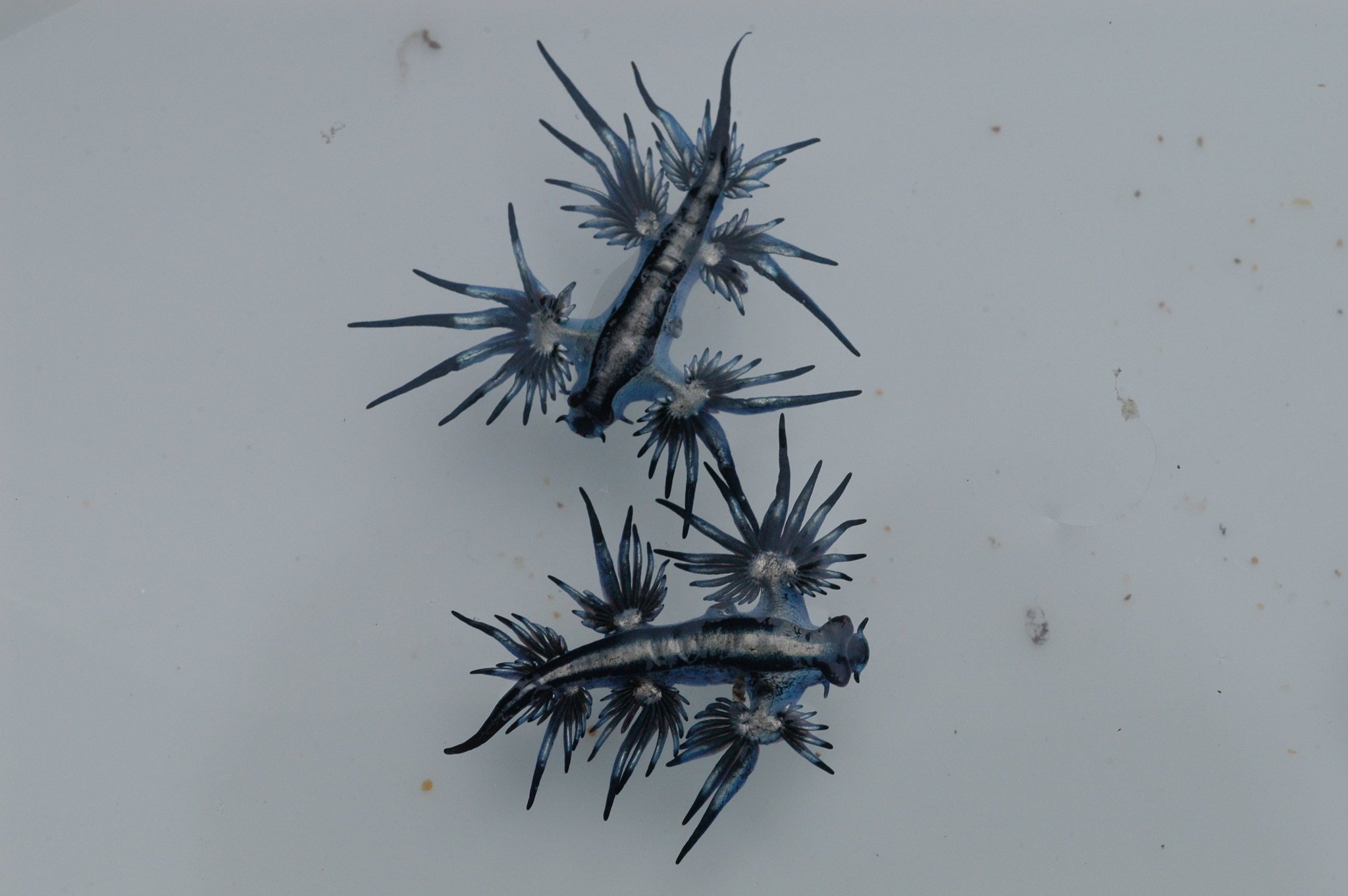
Clearly, then, Hunter was delighted with his find. In fact, Leah recalled that her son “really wanted to touch” the creature because of its squishy-looking appearance. Even at his age, though, Hunter was well-informed enough to know that would have been a mistake. He wisely decided against petting the enchanting animal.
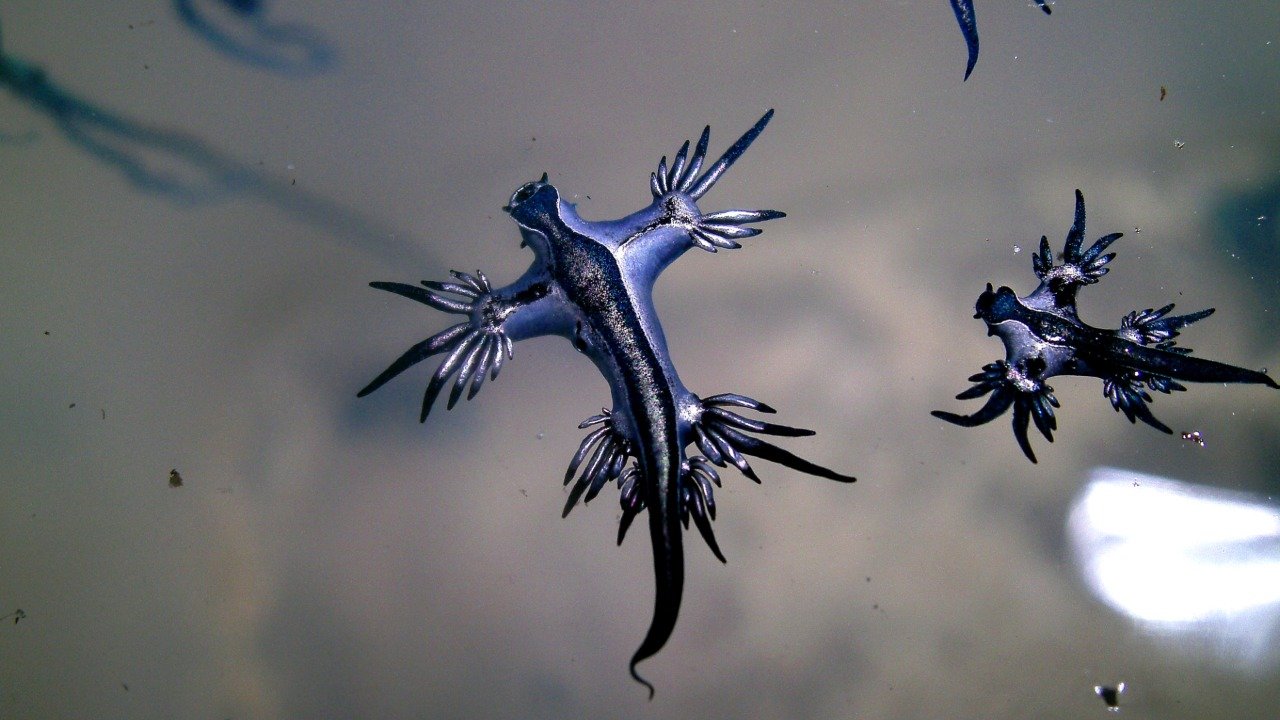
Incidentally, PINS later identified the creature as the Glaucus atlanticus – or blue dragon. So it wasn't a jellyfish at all, as Hunter had first assumed. What are they, then? Well, scientifically, the creatures are mollusks, which puts them in the same group as clams, octopuses and even common garden snails. And while that may not sound particularly threatening, just wait until you hear what they can do.
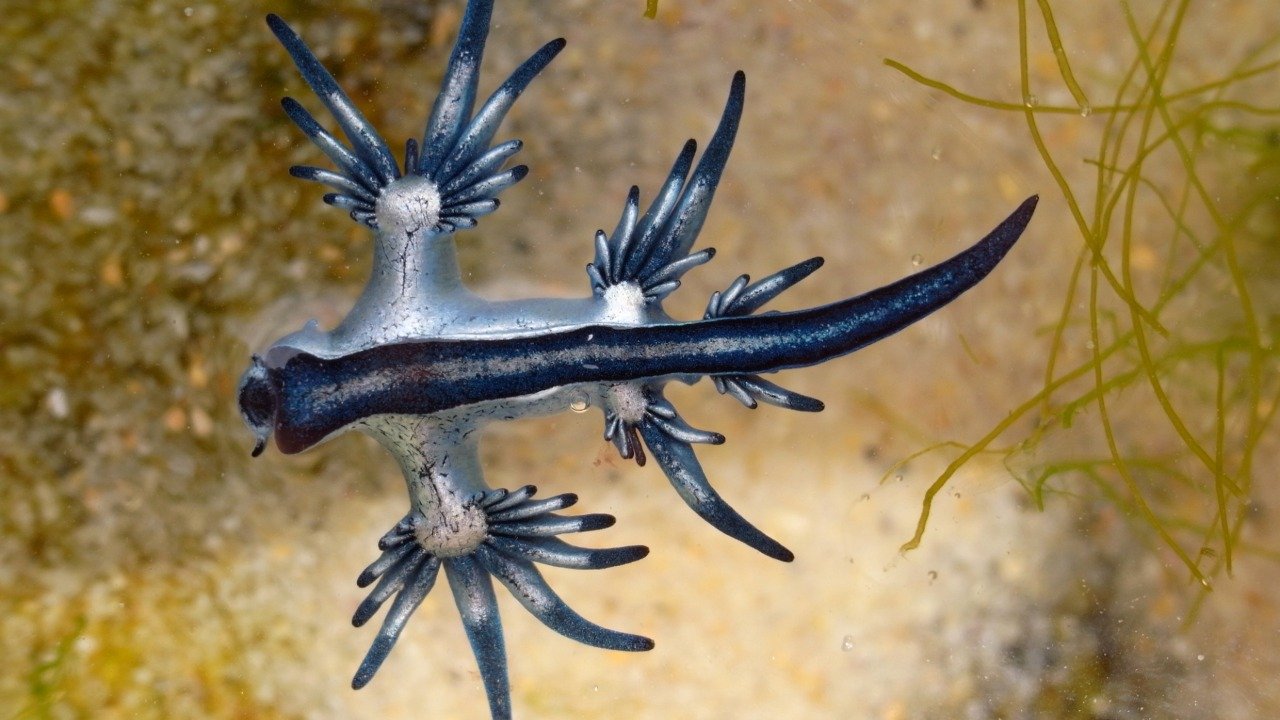
You see, creatures in the mollusk family are invertebrates, meaning they have soft bodies and no backbones. Some of them, such as snails, have evolved to use shells to protect their vulnerable forms. Blue dragons, on the other hand, belong to a group of sea slugs – called Nudibranchia, or “naked gills” – that never develop shells.
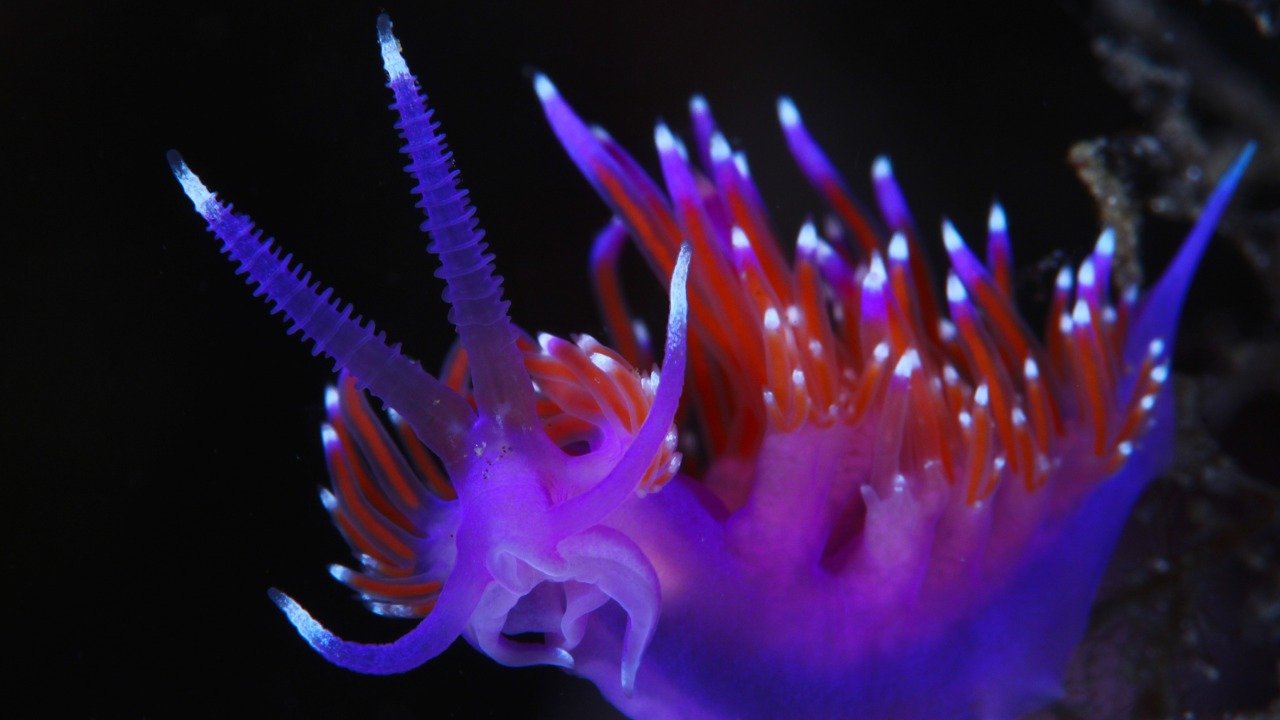
The name is a reference to the fringed feelers or horn-like appendages that commonly grow on the nudibranch’s back. Although they look akin to protective spines or tentacles, in reality, they’re external gills and used for breathing. These mollusks do have tentacles, though.
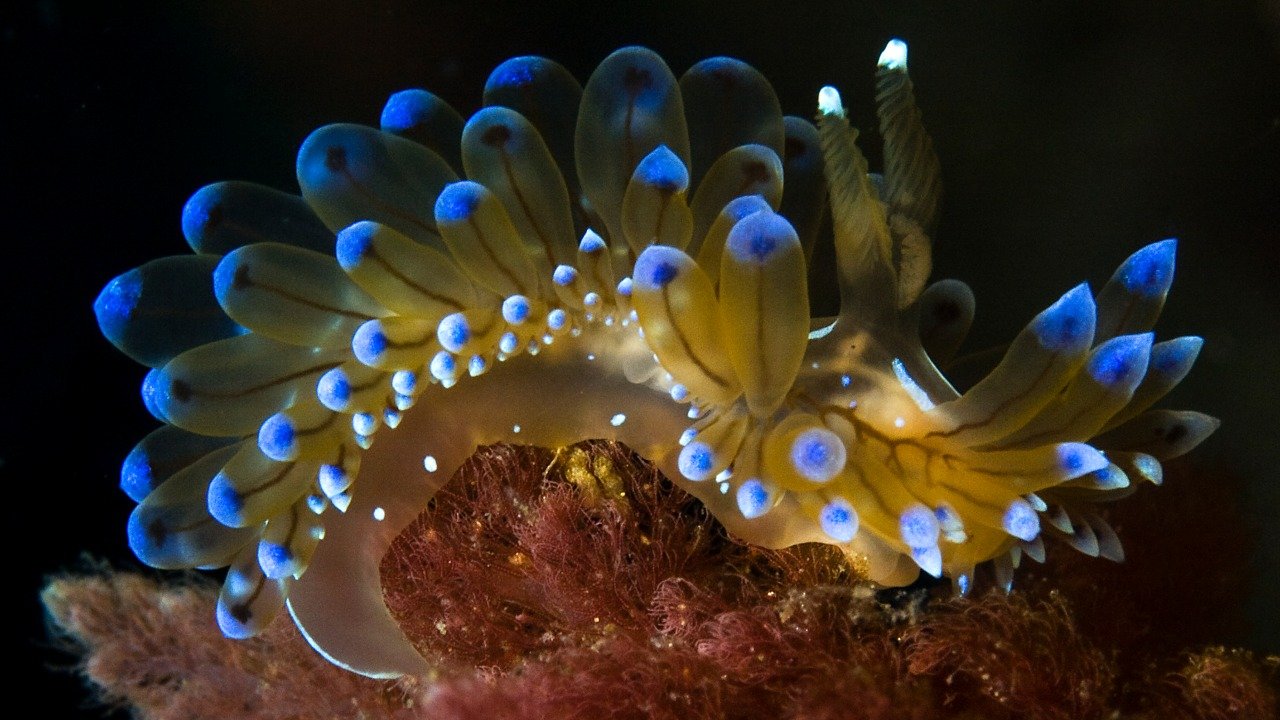
The nudibranch’s tentacles are called rhinophores. Rhinophores commonly grow in pairs on a mollusk’s head, and they act as sensory organs. That is to say, nudibranchs use them to feel for and detect potential food sources, which are generally responsible for their usually lurid pigmentation.
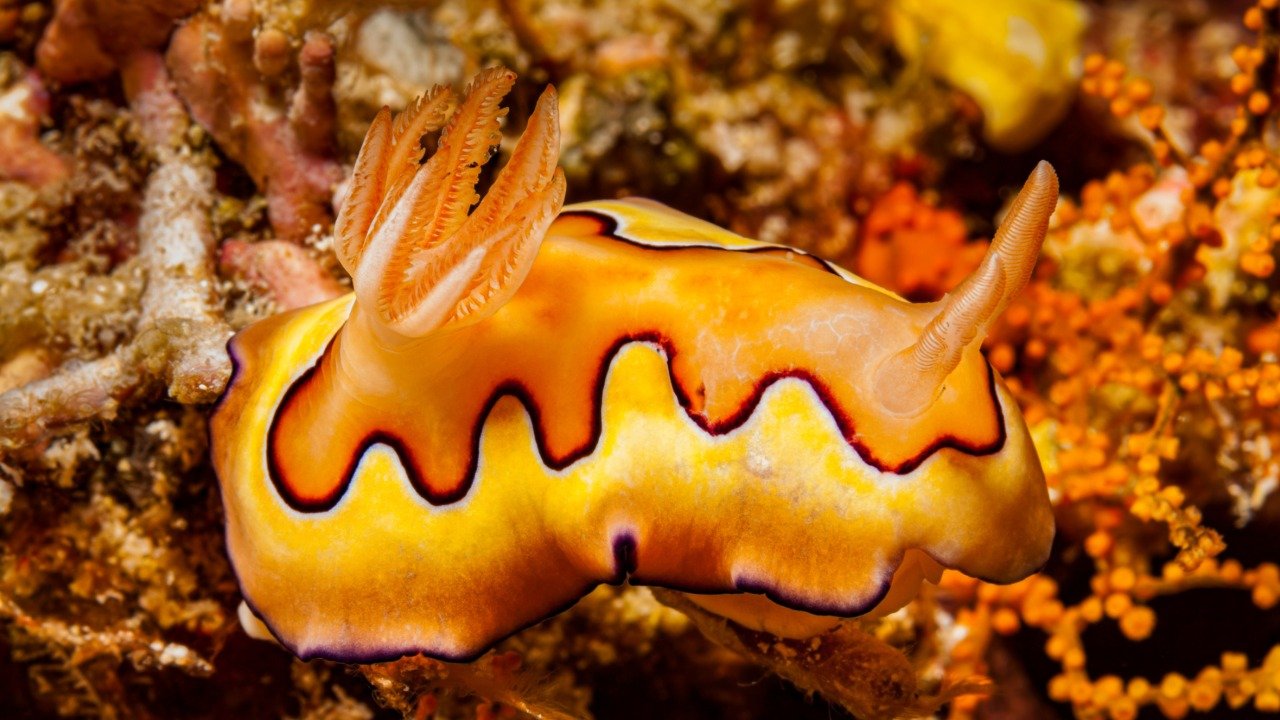
Yes, a blue dragon’s bright body color is typical of nudibranchs, which are generally vivid hues. Although there are a few drabber specimens, their stunning colors are a result of their diet. You see, these creatures are often found among vibrant deep-sea life such as coral and anemones, which serve as their snacks.
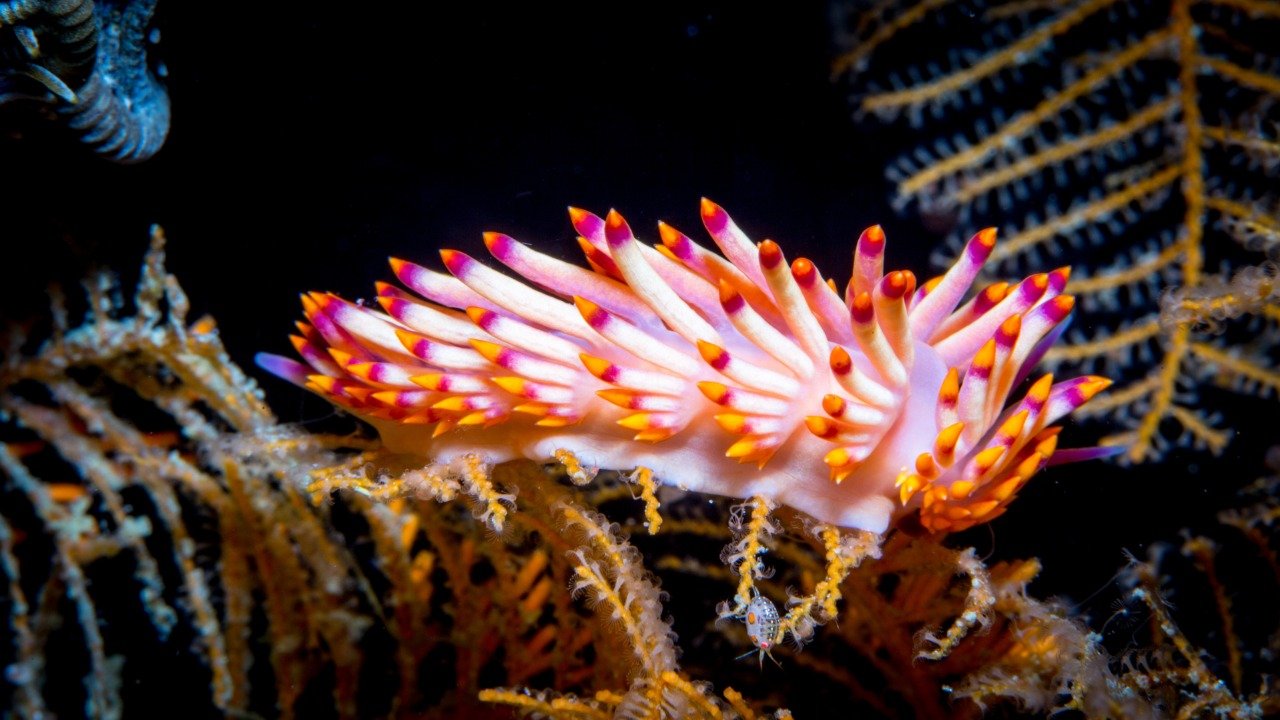
So, alongside the many advantages the nudibranch’s diet provides, it also allows them to blend into their surroundings. But don’t let their alluring pigments deceive you; these slugs are aggressive hunters. In fact, they’re predators that feast on prey lots of other creatures would rather avoid – and for good reason. That even includes their own species.
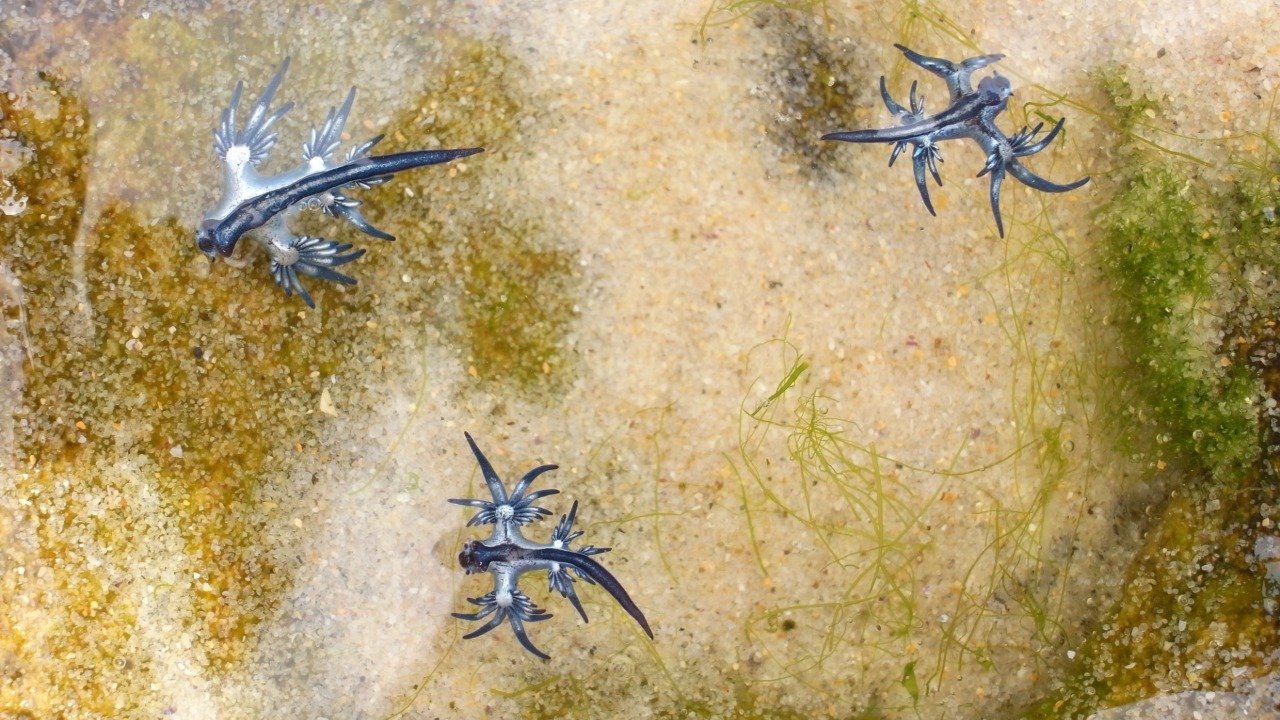
Considering the blue dragons’ voracious appetite and intimidating name, then, you might imagine them as deep-sea giants. But if that’s the case, prepare for a surprise: blue dragons reach just three centimeters in length on average. Yet while the sea slugs are small and can’t breathe fire, they live up to their namesake in many other regards.
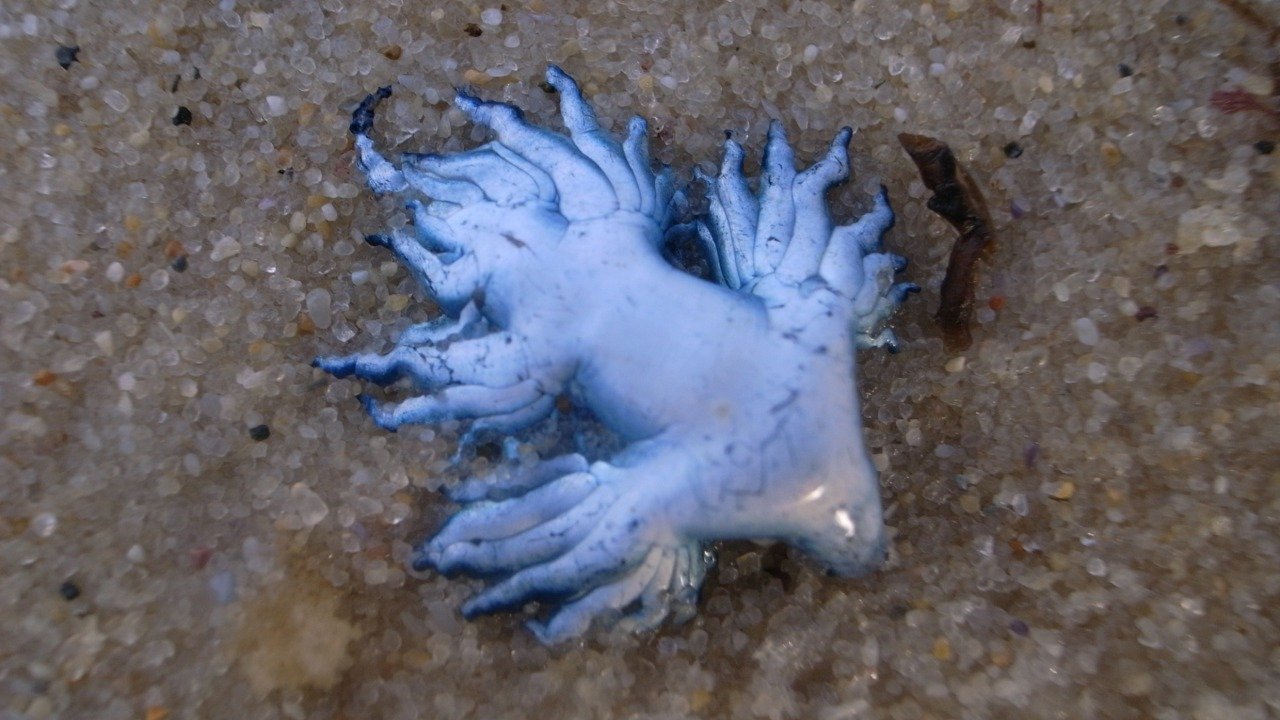
One reason blue dragons are draconic in nature as well as in name is the way they move. With the finger-like appendages on their sides, the swimming slugs look like they’re flying through the water. Perhaps the most surprising thing about this, though, is that blue dragons swim upside down.
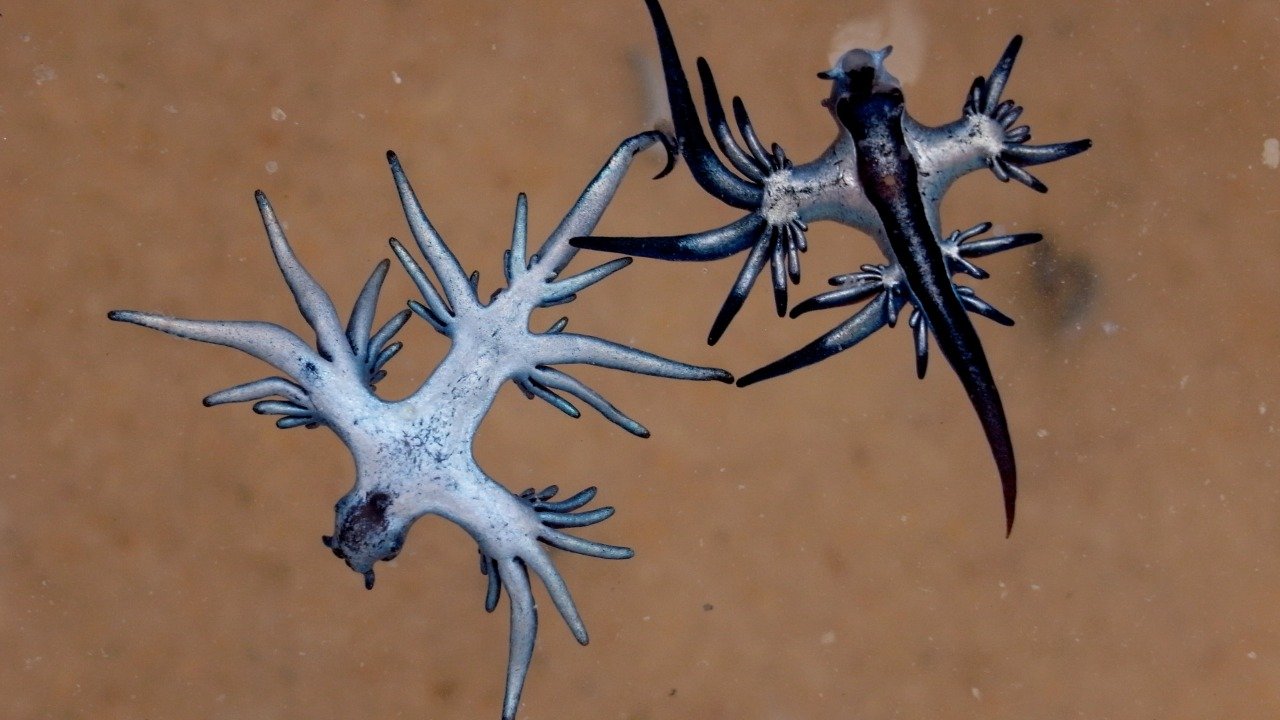
According to Smithsonian Magazine, these elegant creatures have stomach sacs that fill with gas to assist their floating. And the blue dragons’ bright colors are actually on their underside, so they have to flip over to display them. This way, any predators passing from above will spot the hues and realize that sea slug is off the menu.
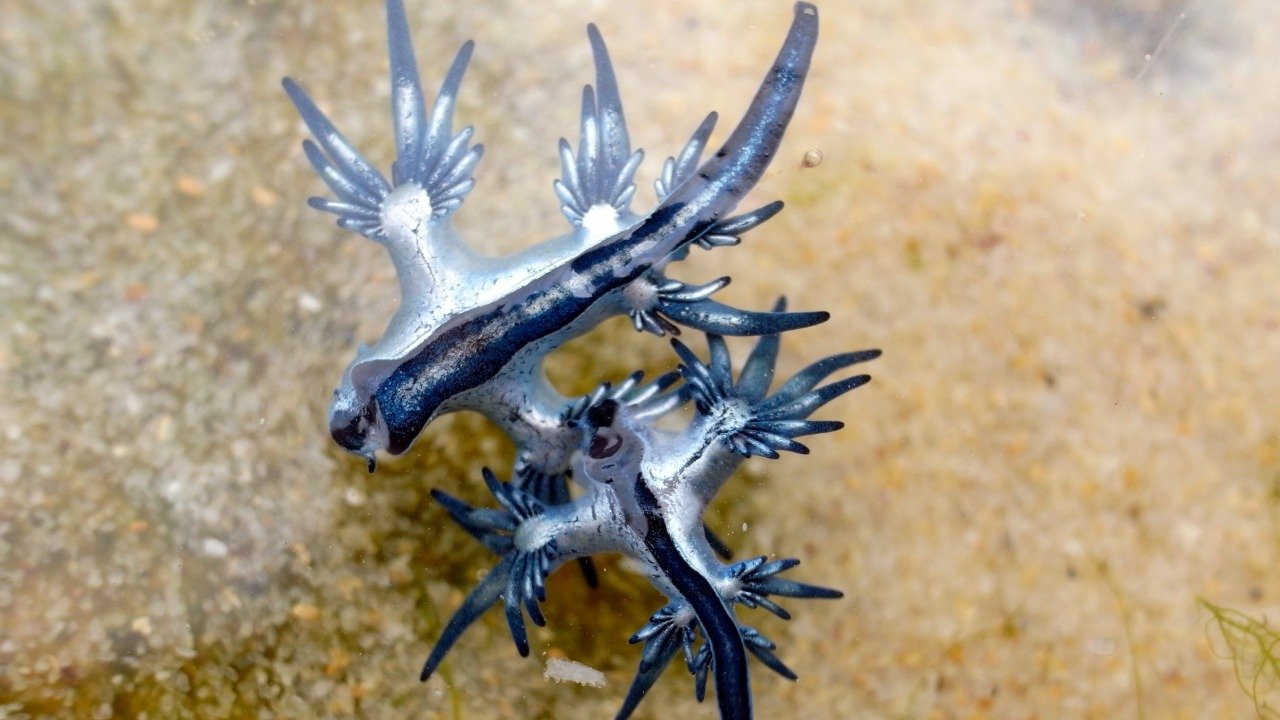
Meanwhile, a blue dragon’s darker body portion will conceal it from predators lurking below. Now, you’re probably wondering why creatures usually living in tropical waters were washing up on the beaches of Texas. After all, they’re clearly not native to the area. This made their appearance all the more puzzling.
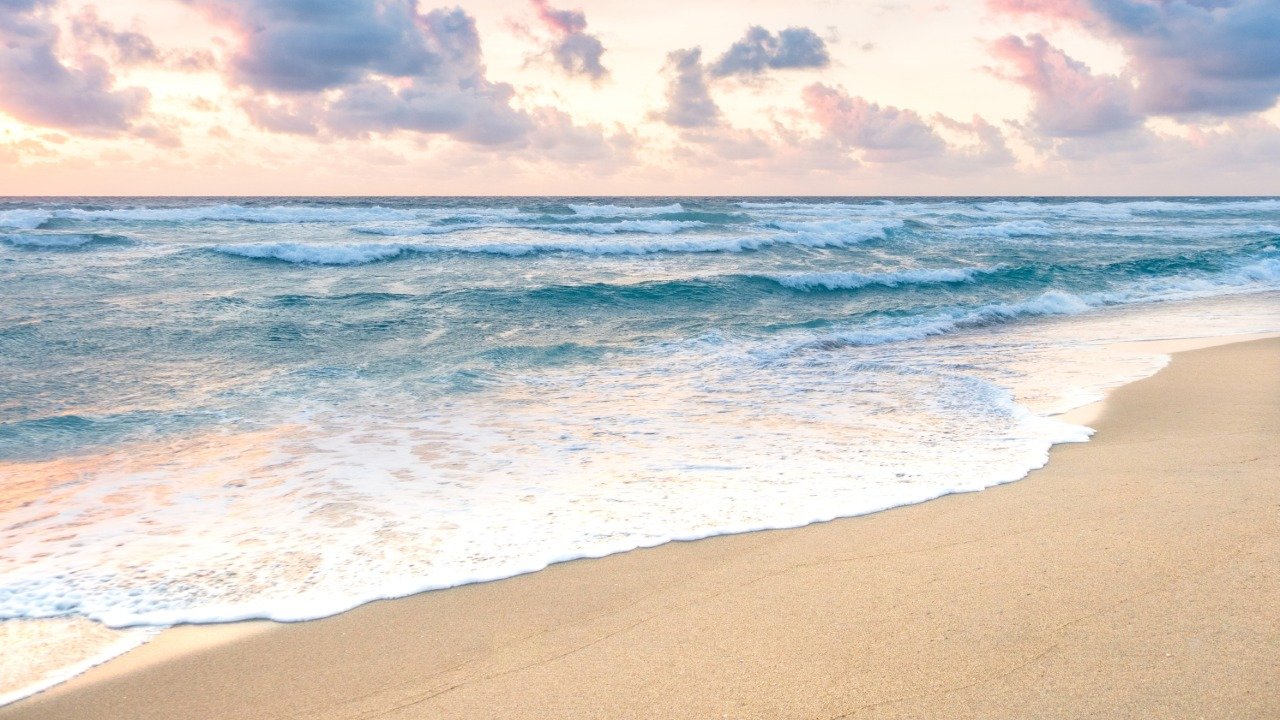
The creatures are usually found in the oceans around Australia, South Africa and Mozambique. Yet this is not the first time that they’ve arrived on American shores. In fact, Florida Today reported that there have been similar reports of blue dragon sightings on U.S. soil in recent years. There was a spate of them washing ashore in 2017, for instance.
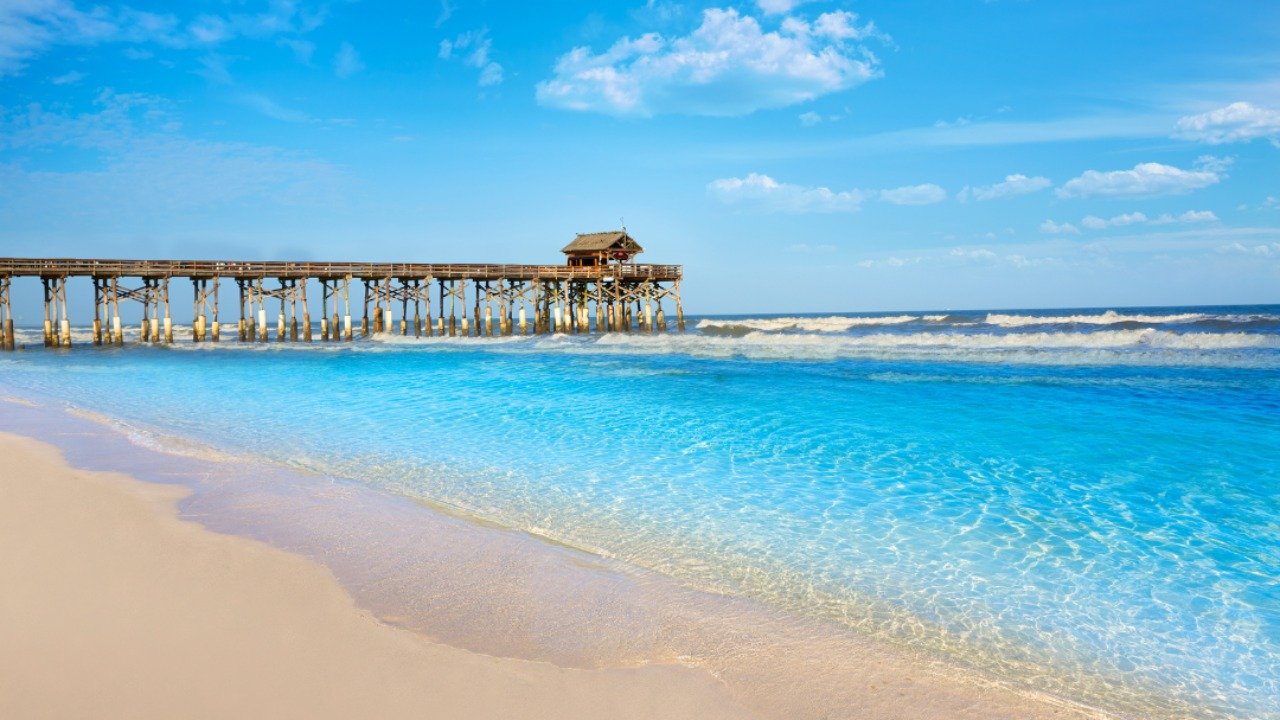
Yes, the rare sea slugs surprised beach visitors at Cape Canaveral with their unexpected arrival. Florida Today reported that several people were either less wise or less fortunate than Hunter, though. You see, officials with Brevard County Ocean Rescue said some witnesses had touched the blue dragons – and learned why their name was so apt.

Yet the enchanting color and appealing shape of the blue dragons have earned them other, less intimidating nicknames. Some people know the creatures as sea swallows or blue angels, for instance. However, these monikers only further conceal the slugs’ more devilish qualities. Yet humans have been aware of these creatures for centuries.
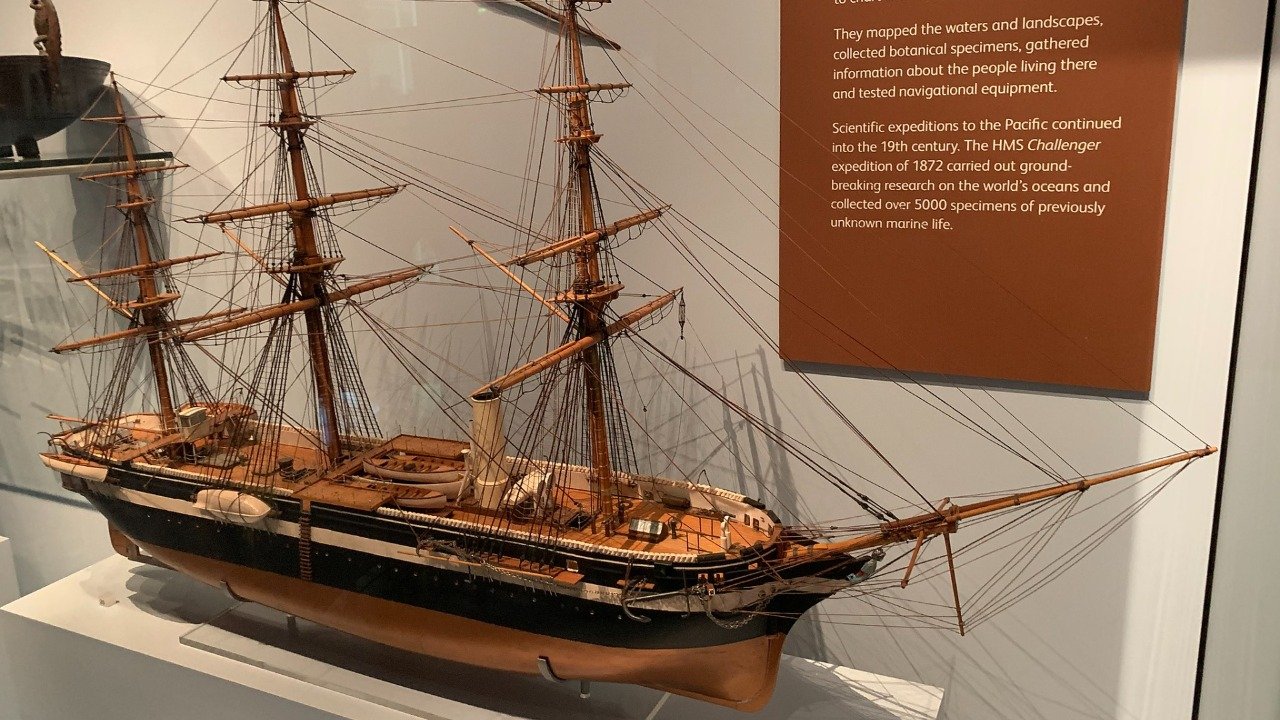
In 1777 explorers encountered the blue dragon back in 1777 and recorded their experience. A live specimen wasn’t caught until almost a hundred years later, though. That achievement went to the crew of a famous expedition that set out from London, England, in 1872. The name of the much-vaunted vessel was the HMS Challenger.
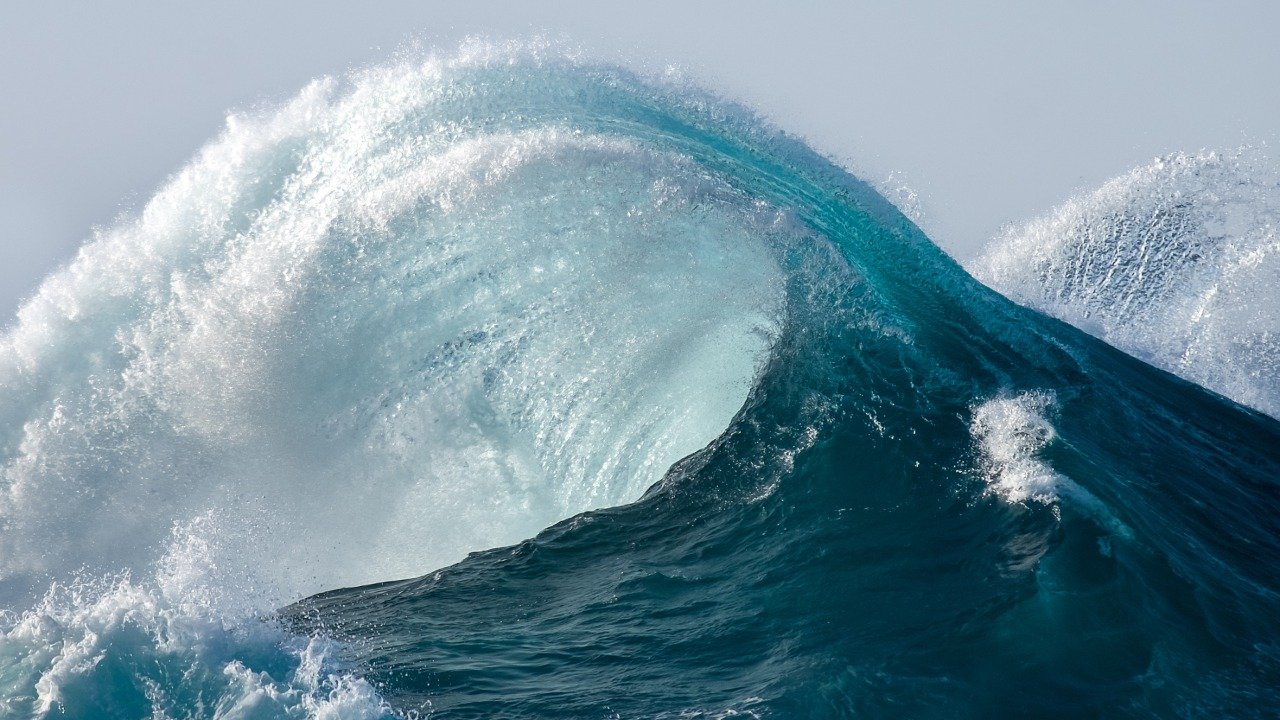
The Challenger was turned into a seafaring laboratory designed to explore the ocean and catalog what it found. The team’s journey turned up a massive 4,700 species previously unknown to science – and they even took specimens. One such find was a 1.2cm blue dragon, which scientists preserved with glycerine.

The Challenger’s blue dragon was later donated to the National History Museum in England – where it’s remained ever since. So what exactly makes these beautiful creatures potentially dangerous? Well, their garish color is a hint. To answer in full, though, we have to backtrack a little and look more closely at the animals’ feeding habits.
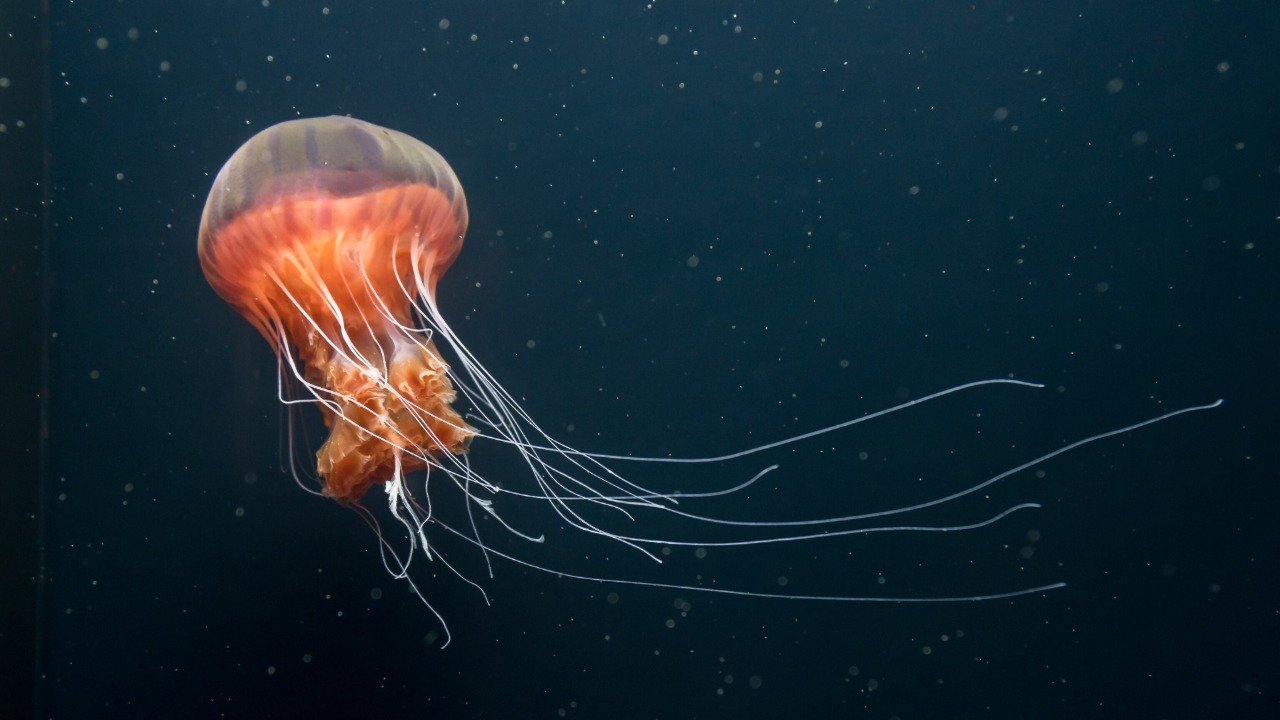
Remember when we said that blue dragons make some questionable digestive choices? Well, jellyfish and other venomous sea critters are below them in the food chain. And nudibranchs have developed a method of not only sustaining themselves, but also using their diet as a means of defense. Specifically, they eat the toxin of creatures many times their size.
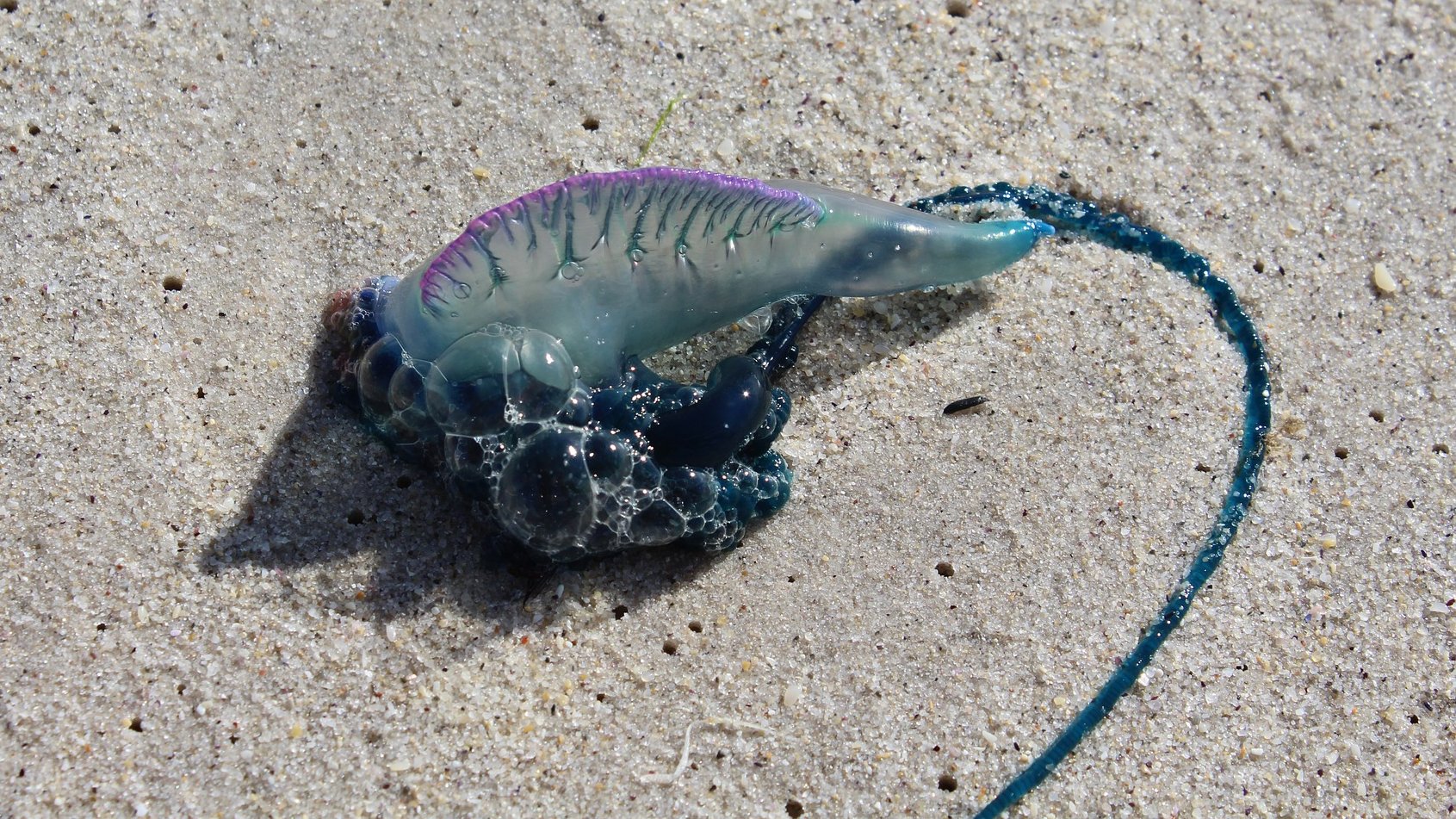
Blue dragons even target cnidarians such as the Portuguese man o’ war, which is often incorrectly mistaken for a jellyfish. That’s likely because the Portuguese man o’ war and the jellyfish are both collections of lifeforms that live and act as one, known as siphonophores. The Portuguese man o’ war does have something in common with its jelly counterpart, though: an array of stinging tentacles.
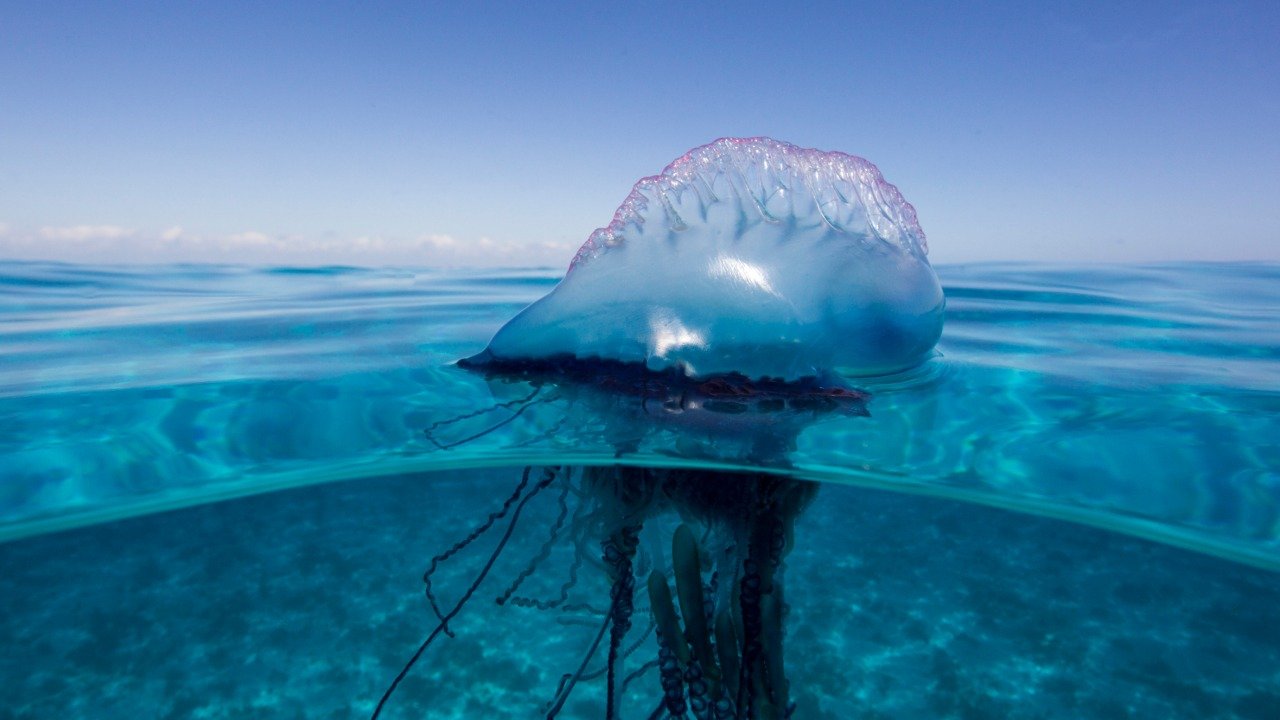
These tentacles are one of a Portuguese man o’ war’s four lifeforms, and they’re coated with toxic nematocysts. A man o’ war uses them to kill or stun prey. But a blue dragon isn’t deterred by this armory; it’s immune to the sting and just sees the tentacles as a potential meal. That’s where the slug’s flotation sac comes into play.
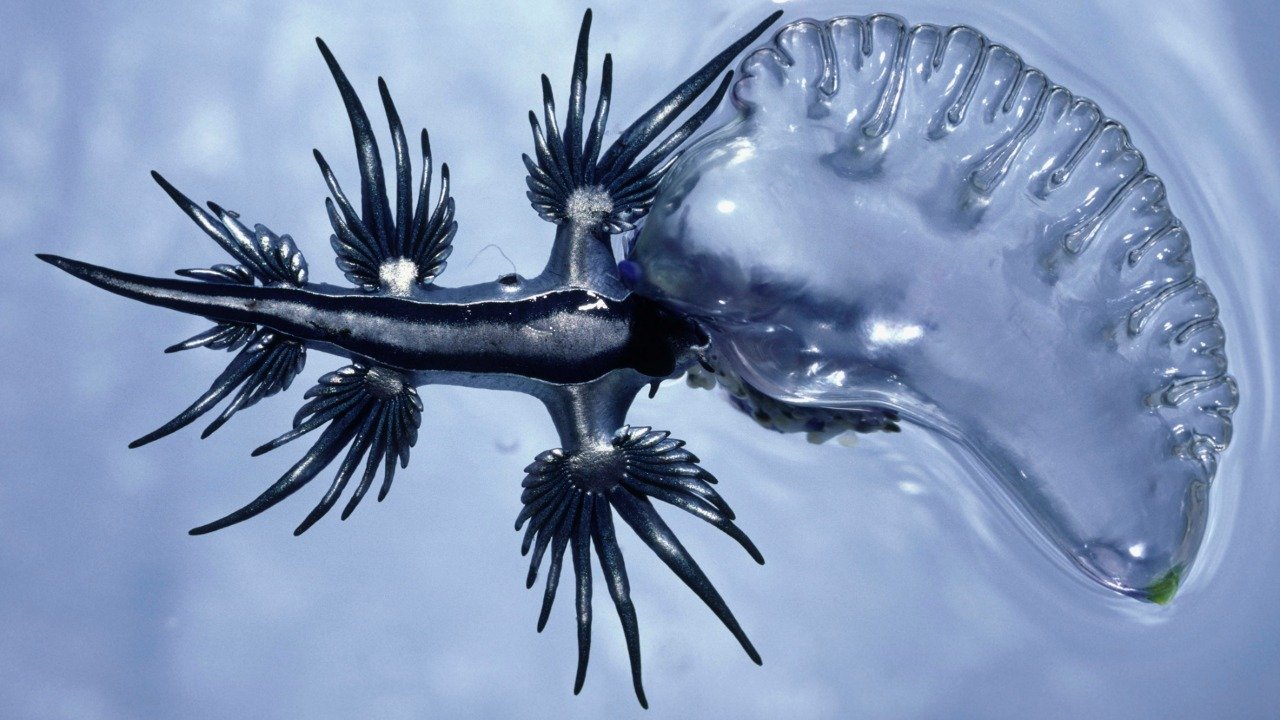
So a blue dragon swims up to its prey and latches onto it with its feet. Then it feeds on the nematocysts, drinking up the toxin and absorbing it into its own body. The slug stores the biggest nematocysts in the ends of its “fingers,” more accurately described as cerata. And, in conjunction with its diet, this behavior gives the blue dragon its color.
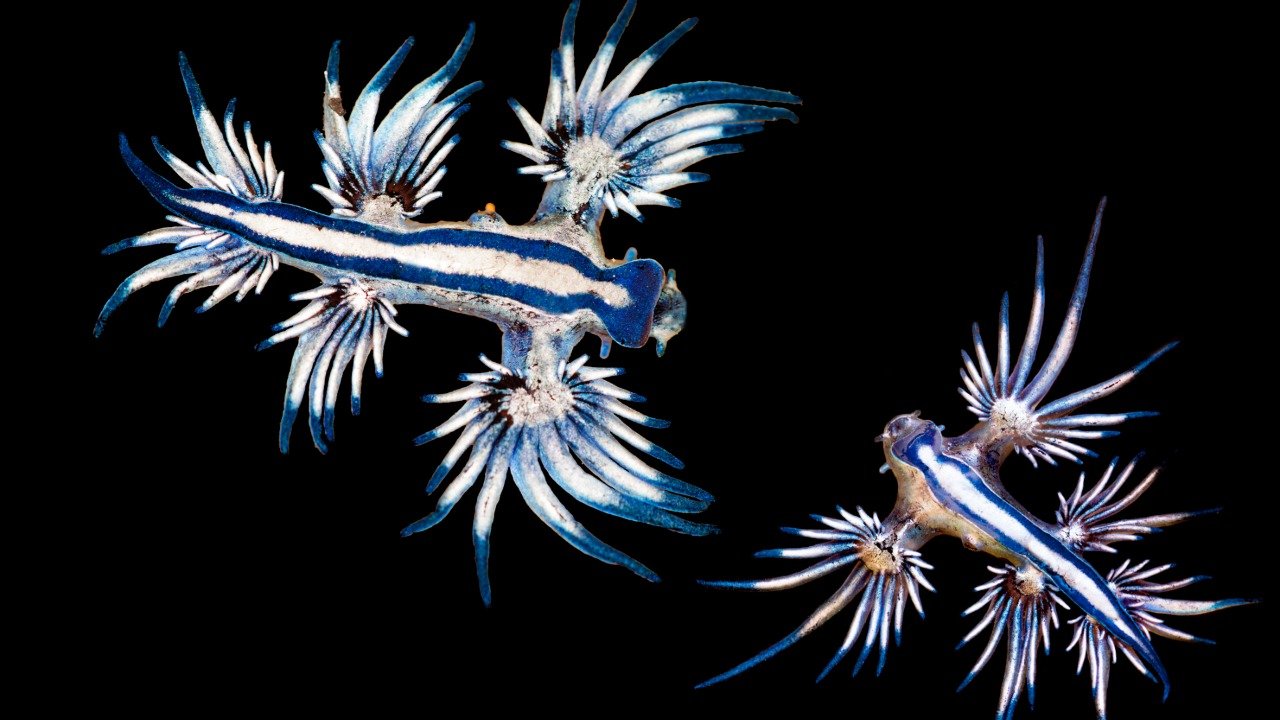
The slug then uses its borrowed toxin to defend itself against predators – but it packs an added punch. Because the toxin is concentrated in one spot, it’s even more powerful than when the man o’ war employs it. And this is the reason why you should avoid touching blue dragons: they can introduce you to a world of pain.
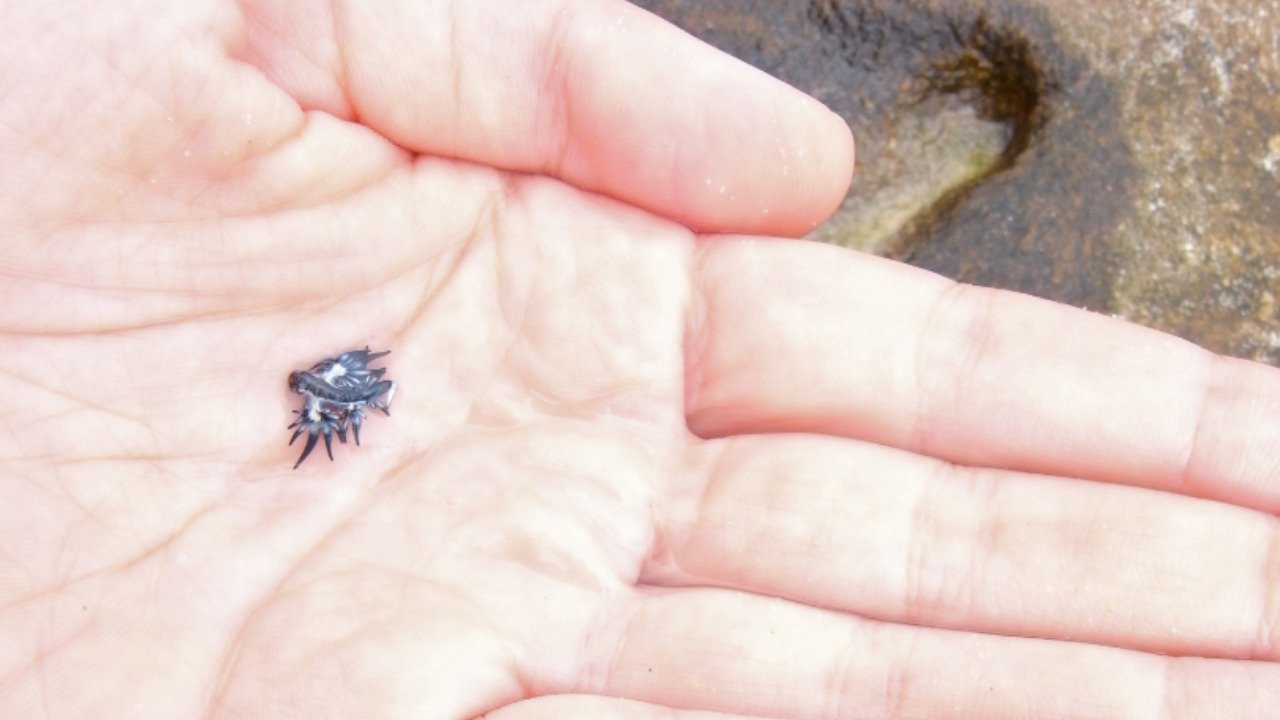
So, as a result of Hunter’s find on Padre Island, PINS put the boy’s photos up on its Facebook page in May 2020. It accompanied the pictures with a wise warning for those who might be tempted by these colorful creatures. The post introduced them with the ominous words, “Here there be dragons.”
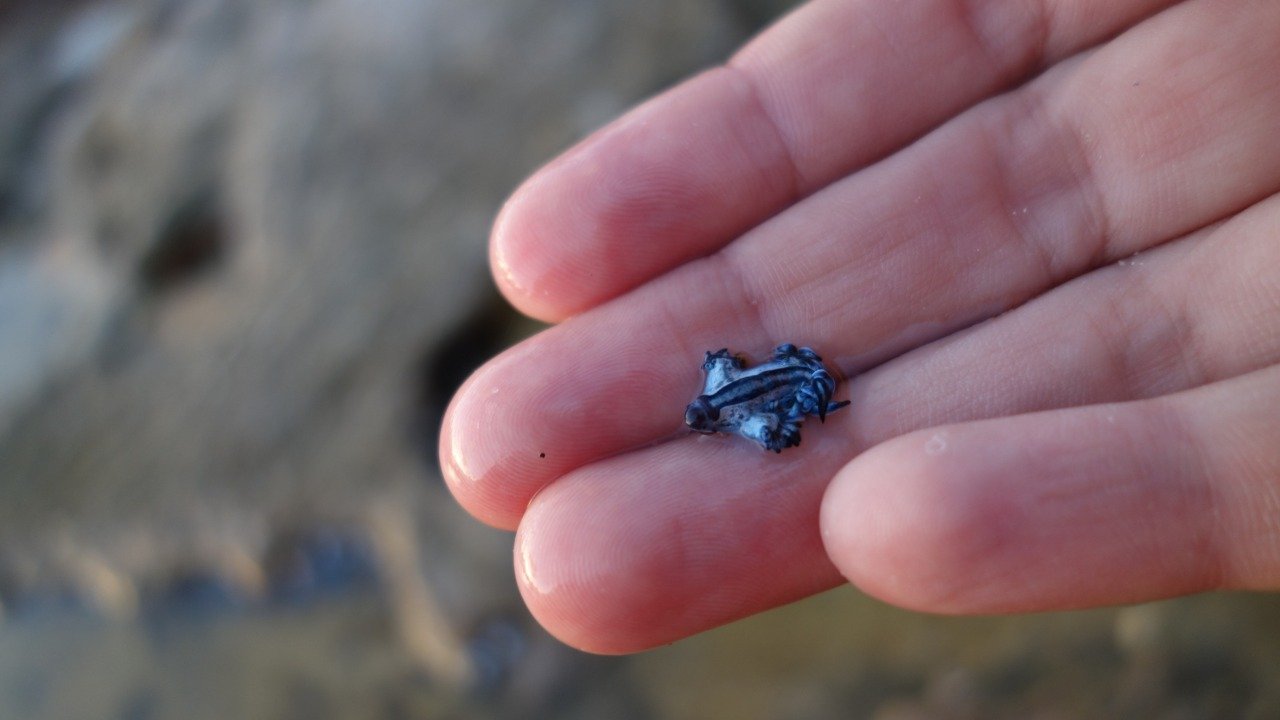
PINS continued, “Blue dragons are very small, generally only three centimeters. But don't let their size fool you, they have a defense worthy of the name dragon.” It went on to say how visitors should look but not touch. “If you see a dragon in the park, be amazed as they are a rare find, but also keep your distance!”
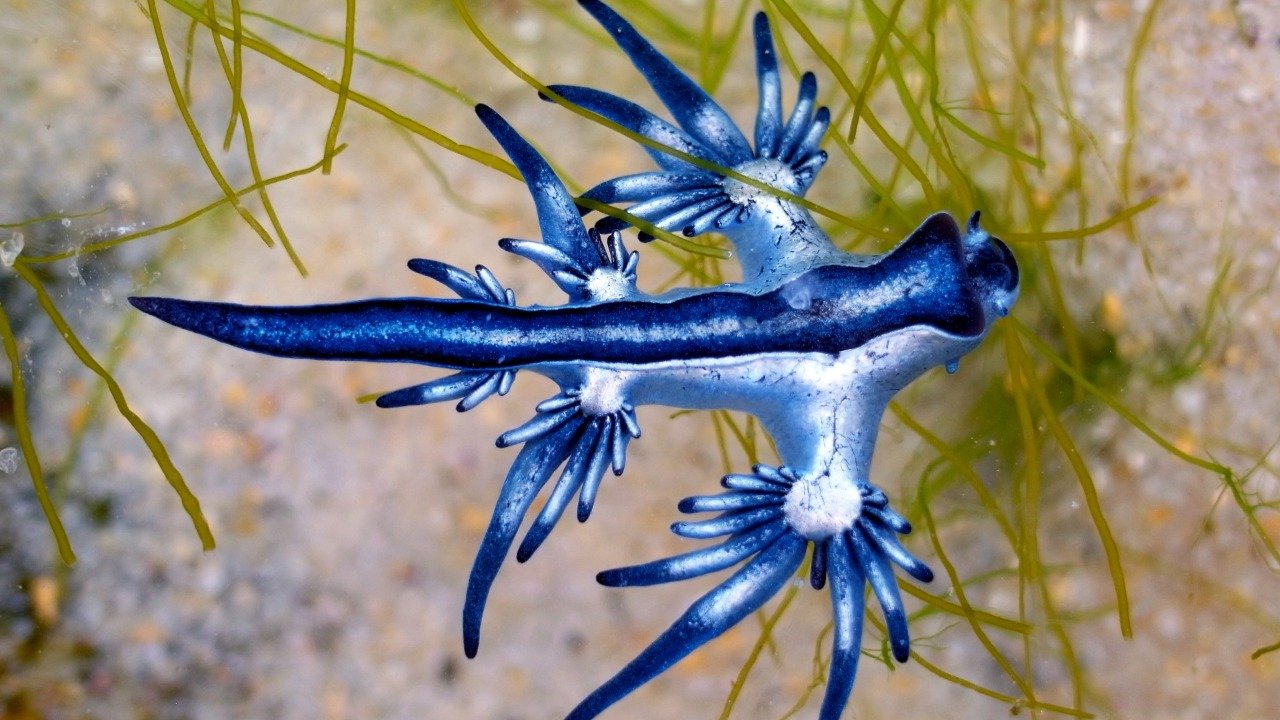
Both Leah and Hunter admitted that touching the blue dragon was initially tempting. Hunter’s mom later told TV station KSAT, “Hunter really wanted to touch it. And I don’t blame him, I did too as they look very soft and squishy. But we discussed that since we have no clue what they are, we [had] better not.”
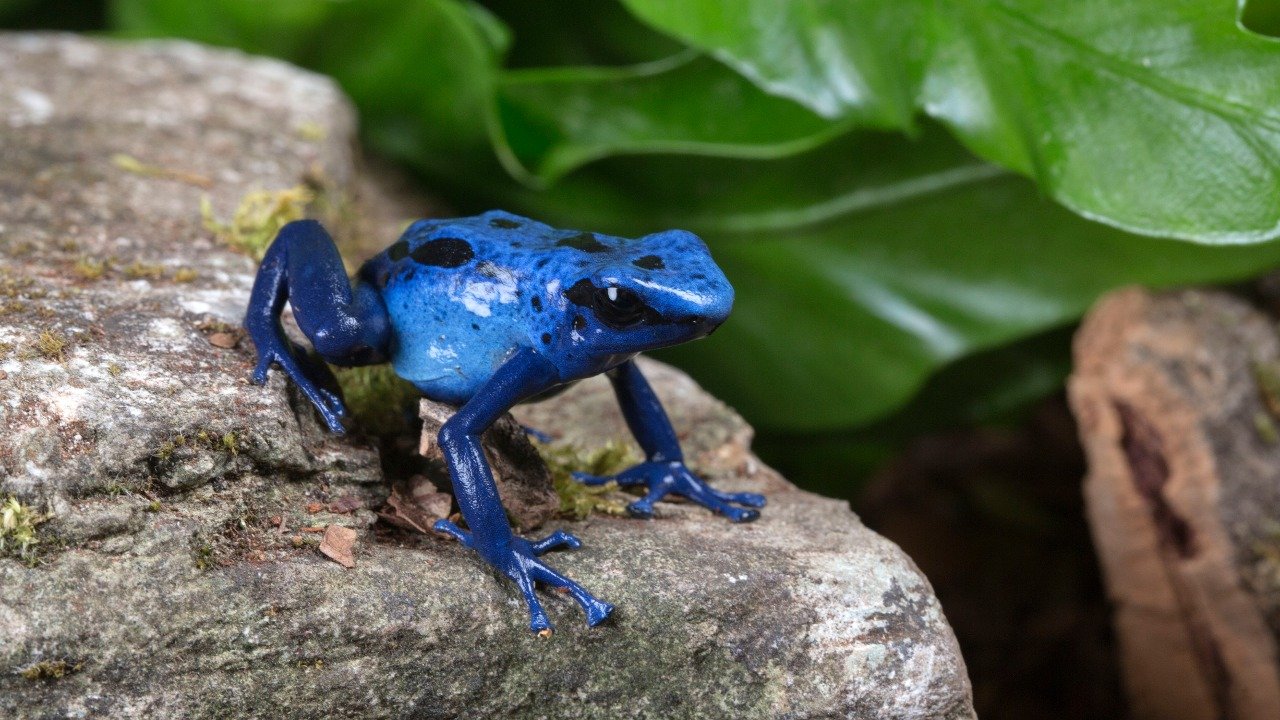
Leah continued, “After thinking about it, he even said, ‘He might be like the poison dart frog, mom, he is kind of brightly colored, which is a warning.’ Smart kid.” But of course, there’s still the mystery of why the blue dragons have been arriving on Padre Island in the first place.

After all, Trey informed CNN that until now he hadn’t seen any blue dragons in the 30 years he’d been visiting Padre Island. He’s not the only person who has been discovering the stunning slugs for the first time, either. Jamie Kennedy, who works as a spokeswoman for PINS, said it was a new experience for her, too.
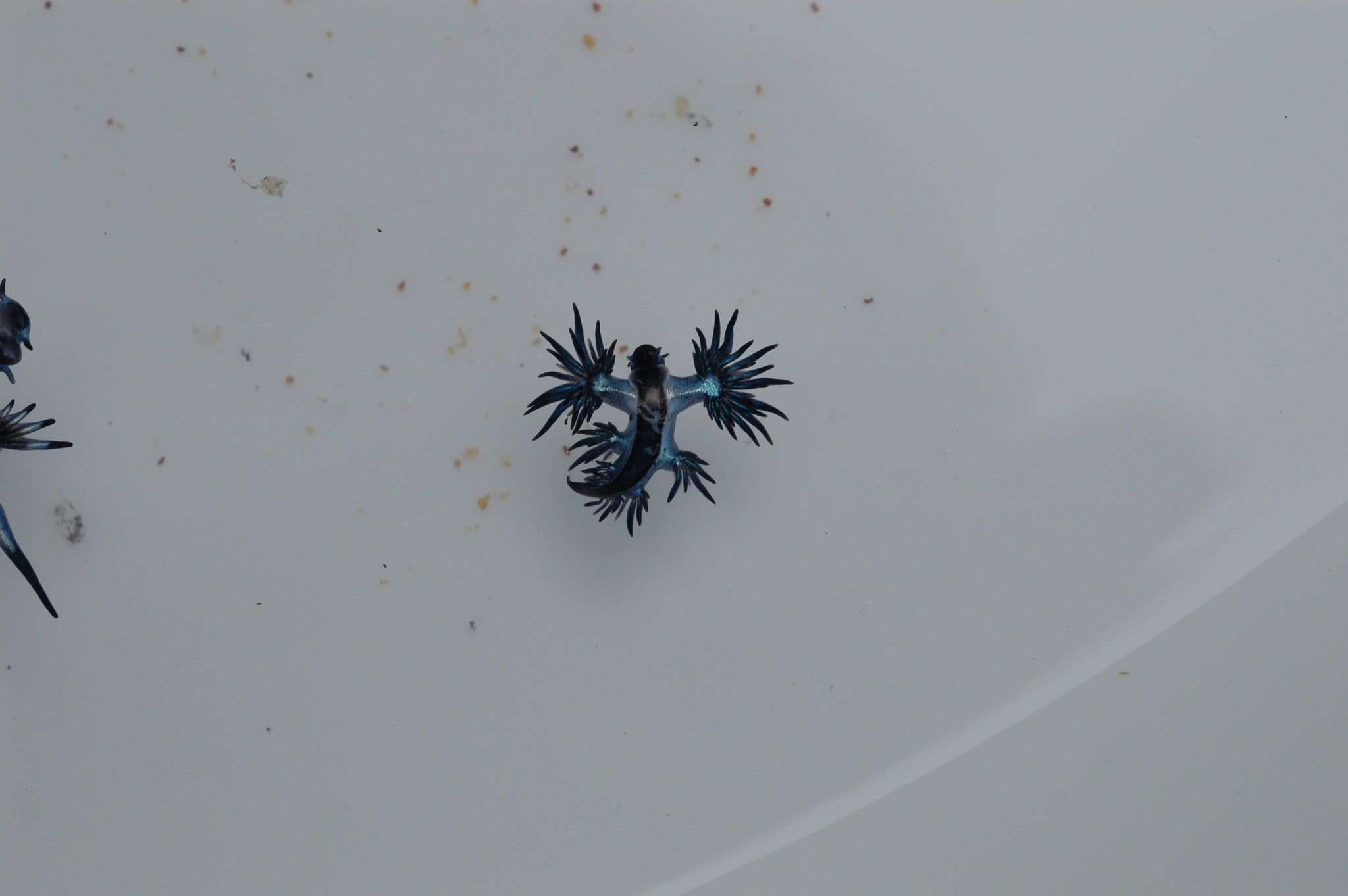
Kennedy revealed that she’s worked at PINS for two years and that this is her first time seeing blue dragons. There has been an increase in their appearances over recent years, though, as the PINS’ Facebook page proves. It had even uploaded some pictures of the sea slugs along with info about them back in 2016.
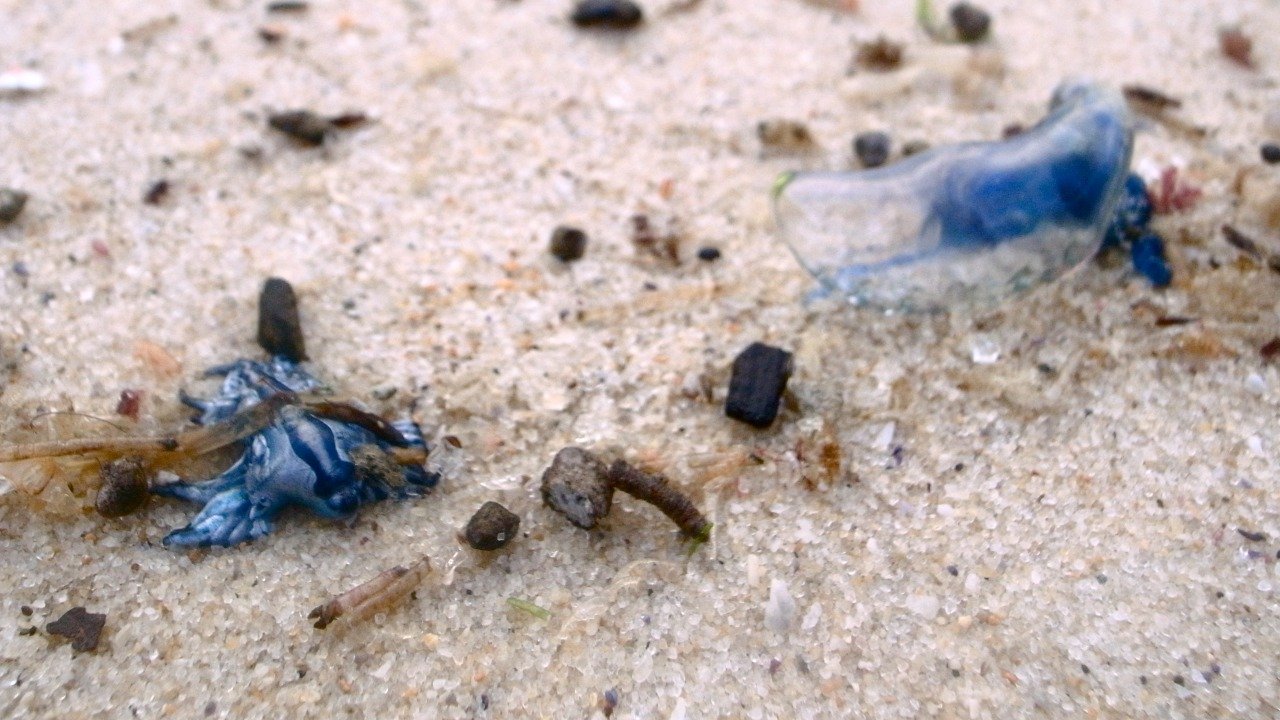
“A lot of people are finding them lately,” Kennedy remarked. But while they’re certainly rare, she had a theory as to why so many of them were appearing across Padre Island. She thought a large group of them had become beached at once and scattered across the shore. And other experts concurred.
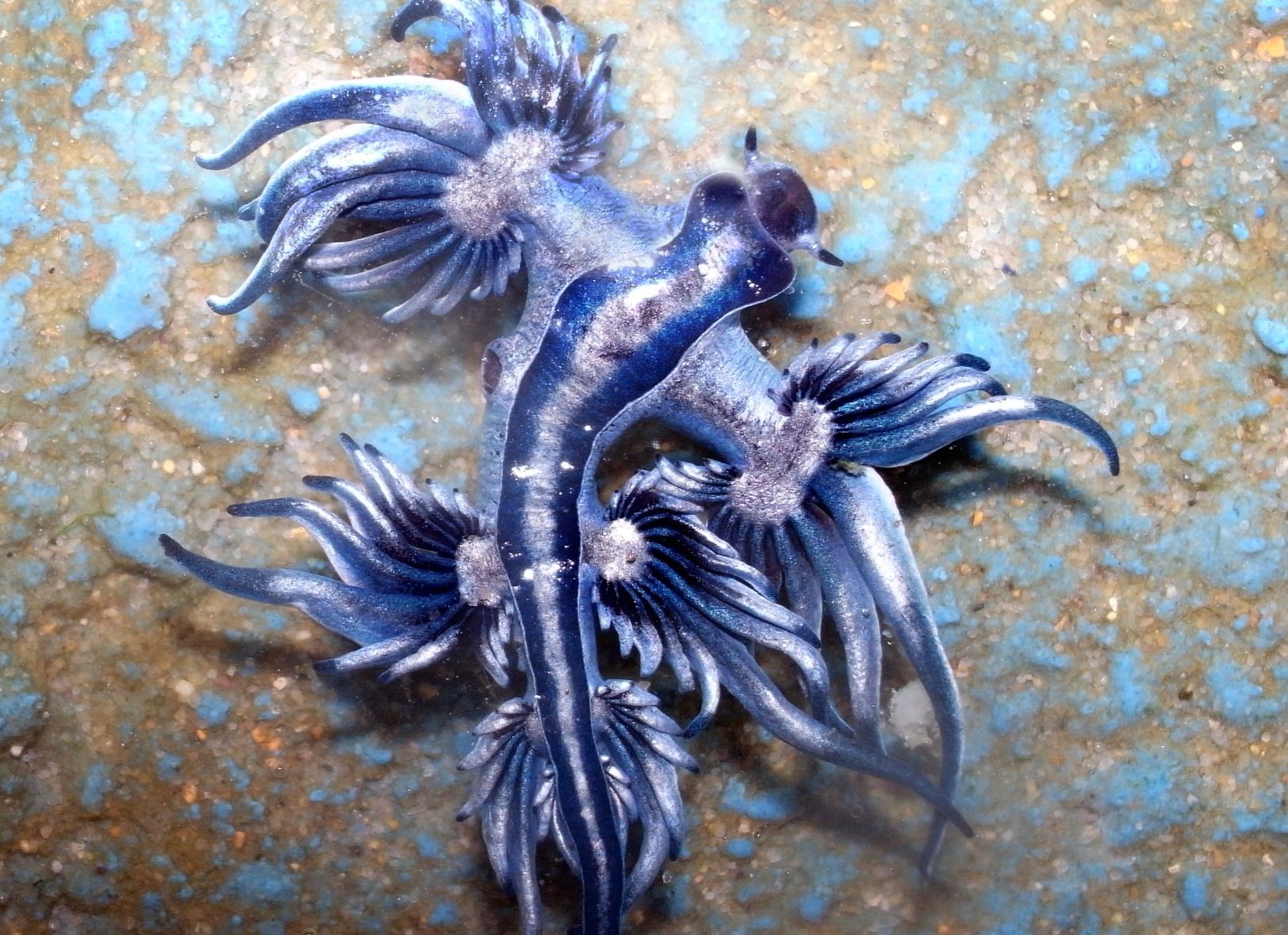
According to KSAT, another PINS spokesperson agreed. They said, “A lot of people are finding them lately. That will often happen with animals that a bunch will wash up at the same time.” Another wildlife expert confirmed this and elaborated on the subject in an interview with TV station KVEO in May 2020.




